

20 Best Doctor of Physics Graduate Schools
Reviewed by David Krug David Krug is a seasoned expert with 20 years in educational technology (EdTech). His career spans the pivotal years of technology integration in education, where he has played a key role in advancing student-centric learning solutions. David's expertise lies in marrying technological innovation with pedagogical effectiveness, making him a valuable asset in transforming educational experiences. As an advisor for enrollment startups, David provides strategic guidance, helping these companies navigate the complexities of the education sector. His insights are crucial in developing impactful and sustainable enrollment strategies.
Updated: June 7, 2024 , Reading time: 35 minutes
Share this on:
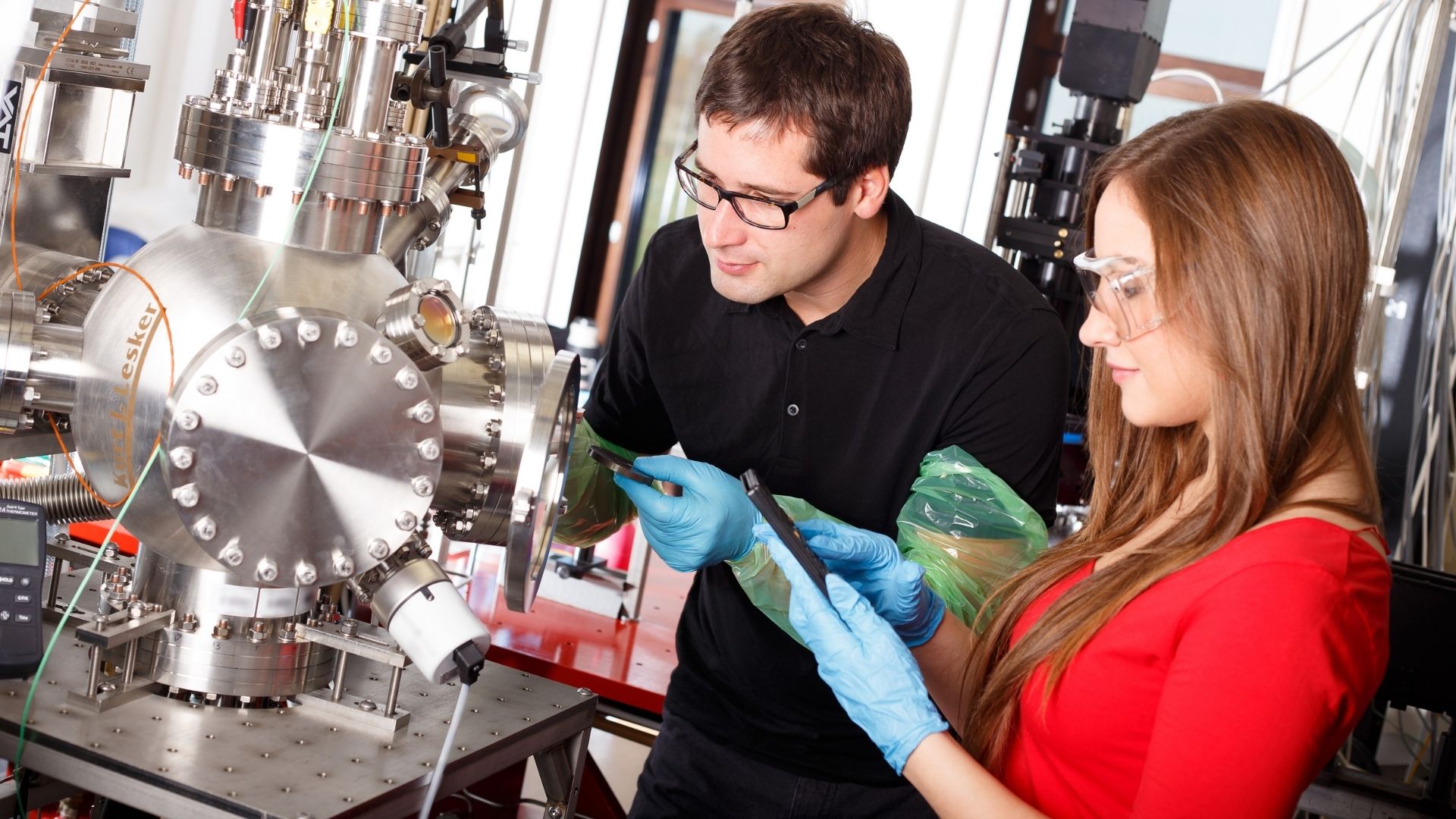
Find your perfect college degree
In this article, we will be covering...
Physics, or physical science, is a discipline that studies the elemental forces that govern every entity in the universe. Physical science is ubiquitous. It is concerned with electromagnetic energy, communication technologies, medical radiology and imaging, cosmological energy, astronomy, and biological physics.
While it is everywhere, not all of its forms and upshots are completely defined, described, or studied – yet this is where physics as an academic discipline thrives.
For the Inquisitive Type…
Academically, Physics is a degree for those with an unending inquisitive nature and an appreciation for abstract and intangible concepts. Waves, subatomic particles, and cosmology, to name a few, are concepts that only become alive and apparent through advanced mathematical equations.
The Doctor of Physics (Ph.D.) is a terminal degree in the field of physics. It is the most advanced degree available in the field of physics and provides students with the opportunity to explore a specialty area such as astrophysics, condensed matter physics, or quantum mechanics, among others.
Choose Your Discipline…
Through coursework and research experience, Ph.D. students develop expertise in a chosen sub-discipline as they advance their understanding of physics. These levels of learning require not only extensive research experience but also extensive patience, as completion of dissertations and research may take years.
Most students who embark on an academic track in physics are geared to take it all the way to graduate school. A doctorate and post-doctorate in physics are the ultimate academic goals (not career goals). Upon completion, graduates of the Doctor of Physics program often pursue a career in research and academia.
Quick audio summary:
Check this out:
METHODOLOGY
The following metrics and considerations were employed to arrive at the ranking below (in no particular order):
- The number of available areas of focus/research areas, research centers, facilities, and institutions, and the availability of equipment and research instrumentation were strongly considered.
- Funding received from the National Sciences Foundation (NSF) and other government agencies, such as the Department of Energy, was also factored in, as this signifies the level and depth of scientific research activity within the institution.
- The availability of university-based and outside fellowships, grants, and awards was also considered, with the same rationale as with the previous metric.
- “Word of mouth” from other physicists themselves, through online scientific forums and other Q&A websites (e.g., Quora). Only responses from those with a legitimate profile with academic credentials to boot (Ph.D. or post-doc) were considered.
- Opportunities for interdisciplinary or collaborative research. It allows students to conduct applied physics work in other disciplines or industries, which is the ultimate goal of any theoretical work.
- Combination of rankings from other school ranking publications. The National Taiwan University – Performance Ranking of Scientific Papers for World Universities is also known as the NTU Rankings.
In summary, the ranking below was based on two things: breadth of research opportunities and professional public opinion. The first criterion is a given. The second criterion may appear subjective, but the reality is that physicists determine the top caliber through published research in peer-reviewed journals and other scientific literature.
When on the hunt for a good physics program, you don’t ask a doctor, a lawyer, or an engineer, right? You ask a physicist.
THE 20 BEST DOCTOR OF GENERAL PHYSICS GRADUATE SCHOOLS
Yale university.
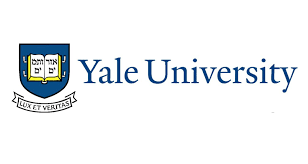
New Haven, CT
Ph.D. in Physics
Yale University was founded in 1701. The Physics Department was an upshot of the Department of Philosophy, the Arts, and the Sheffield Scientific School. In 1894, the Physics Department had physicist Arthur Day as part of its faculty.
- The Physics Ph.D. program requires students to complete the core courses in quantum mechanics, electromagnetic theory, and statistical and mathematical physics. First-year students must also take the following courses: Topics in Modern Physics Research and Responsible Conduct in Research for Physical Scientists.
- The prerequisites for doctoral candidacies, such as the required coursework, qualifying exams, and the submission of a written thesis proposal, should all be completed before the culmination of Year 3.
- Students can apply to any of the external fellowships that are available through the Physics Department. These include grants from the NSF and the Department of Energy .
Standout Features of the Program:
The department researches 11 areas of physics . Among the notable fields are Gravitational Physics and Biophysics. It is also home to three physics research centers, such as the Wright Laboratory and the Yale Quantum Institute . It offers an option for Physics Ph.D. students interested in interdisciplinary applied physics to cross-enroll into the Physical and Engineering Biology Ph.D. program , an inter-departmental offering.
Yale University was the first to confer a Ph.D. degree in the US in 1861. Also, among its many firsts, it is the first institution to confer higher learning degrees to minorities – first, to Yung Wing, a Chinese BA graduate in 1854, and Edward Bouchet, an African American Ph.D. graduate in 1876.
University of Washington (UW)
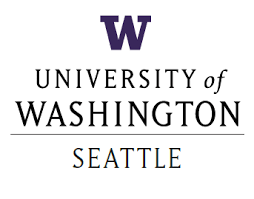
Seattle, WA
The University of Washington, a public research facility and university, was established in 1861. It has been teaching physics courses such as mechanics and calculus ever since. The Department of Physics was launched in 1928 and has since expanded to include a department dedicated to Astronomy and other research centers and institutes.
- UW offers a doctoral program in Physics, which requires the completion of 90 credits of coursework.
- A general exam is required, which determines the student’s readiness to undertake dissertation work. The final exam is also required, which is based on the doctoral candidate’s dissertation.
- Applicants to the program must demonstrate a strong background in courses like electromagnetism, quantum mechanics, and optics. Knowledge of nuclear, particle, and condensed matter physics is a big plus.
- Students can research any of the department’s 14 research areas , including Nuclear Theory and Neutrino Physics.
- First-year students are expected to take on mandatory teaching assistantship roles to receive funding. For the succeeding terms, students must secure funding sources on their own, whether through TA work, RA work, or a combination of both. UW will help in this regard.
Standout Features of the Program:
The department is home to six research centers and institutes , four of which receive government funding. For instance, the Department of Energy co-funds the Institute for Nuclear Theory along with university funding.
UW spearheads the NSF Institute for Accelerated AI Algorithms for Data-Driven Discovery or A3D3 . It recently received a $15 million NSF grant to help fast-track studies in physics and astrophysics and integrate these with neuroscience through AI, data science, and machine learning. The institute brings together nine universities with UW at the helm.
California Institute of Technology (Caltech)

Pasadena, CA
Caltech was founded in 1891 by benefactor Amos Throop. In 1921, astronomer George Hale, physicist Robert Millikan, and chemist Arthur Noyes worked together to lead the university to become a behemoth in scientific research. Since then, Caltech’s Division of Physics, Mathematics, and Astronomy co-manages and spearheads more than ten research centers, including JPL, and has produced close to 20 Nobel laureates in Physics.
- Students admitted to the Ph.D. program in Physics must submit a study plan for approval before the first term closes.
- Passing the written exams (Year 2) and the oral exam (Year 3) is required.
- Elementary Particles and Fields
- Quantum Information and Matter
- Physics of the Universe
- Interdisciplinary Physics
- Students are also required to undertake TA work for at least one semester.
There are 13 research areas within the Physics division. Some of the standout areas include Theoretical and Experimental Elementary Particle Physics and Gravitational Wave Science. Caltech is home to 7 research centers, including the Center for Data-Driven Discovery (CD3) and the Space Radiation Laboratory (SRL) .
Caltech manages NASA’s Jet Propulsion Laboratory or JPL . Also, together with MIT, it operates the Laser Interferometer Gravitational-Wave Observatory, or LIGO , which the NSF funds. Caltech also owns the Palomar Observatory in San Diego, CA, and co-manages the Keck Observatory in Hawaii with the University of California system.
Harvard University
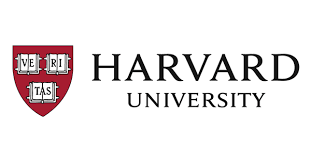
Cambridge, MA
Harvard University is one of the oldest US universities founded in 1636. In the 1800s, the Department of Physics was instituted, emphasizing integrating theoretical learning and laboratory application.
- The doctoral program in Physics, regardless of the chosen track , requires 64 credit units of study, passing marks in two oral examinations, and the submission and defense of a dissertation.
- Students may also cross-enroll at MIT for some graduate-level courses.
- Students are required to hold full-time academic residence for at least two years or four terms.
- Harvard will cover the cost of attendance, including stipends, of first-year Ph.D. students for both terms, after which students are expected to apply for fellowships or apply for RA positions or teaching fellowships to cover their funding and other expenses for the succeeding terms.
The program offers four tracks toward a doctoral degree in Physics: General Physics, Biophysics, Engineering and Physical Biology (EPB), and Molecules, Cells, and Organisms (MCO). Students interested in doing physics research and its integration or application with other fields such as engineering and biology may opt for the other three tracks. Students under the general track may choose to join any of the department’s 13 research centers , including the Black Hole Initiative , the first of its kind worldwide.
The Department of Physics does its part to break stereotypes and glass ceilings through its “ Women in Physics ” initiative. The organization’s objective is to bring together female physics students of all levels of higher learning for mentoring and professional camaraderie. It also aims to encourage more women to be part of a career field that male scientists have long dominated.
Massachusetts Institute of Technology (MIT)
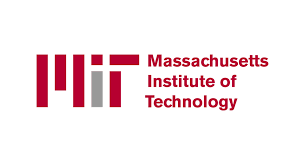
Ph.D. in Physics and Ph.D. in Physics, Statistics and Data Science (PhysSDS)
Founded in 1861, MIT is a groundbreaker in research and its applications and, thus, home to many innovations. It launched the Department of Physics four years later, which offers the doctoral program via two pathways – General Physics and the Physics, Statistics and Data Science (PhysSDS) track.
- Both tracks can be completed in six years or less. Fewer attempts in doctoral exams can shorten the completion time.
- Astrophysics
- Atomic and Optical Physics
- Quantum Information
- Condensed Matter Physics
- Experimental OR Theoretical Nuclear and Particle
- Plasma Physics
- They must take at least two courses in their chosen area of research.
- Students in the Physics Ph.D. program may cross-enroll into the Ph.D. in PhysSDS track. They can complement their advanced physics research with knowledge of data science and analysis, inferential algorithms, and statistical modeling with machine learning, to name a few.
MIT is proactive in helping its Ph.D. students, especially those in good standing, receive full funding throughout their residency, whether through fellowships, research assistantships (RA), or teaching assistantships (TA). For example, if the research contract for which the RA is completed or terminated, MIT will support the student for one term and proactively help seek other funding opportunities.
The MIT Physics faculty comprises achievers who have won almost every award and prize in Physics known to man – the Nobel Prize, the MacArthur Fellowship, the National Medal of Science, the Sloan Research Fellowships, the Presidential Medal of Freedom, and many more .
Princeton University
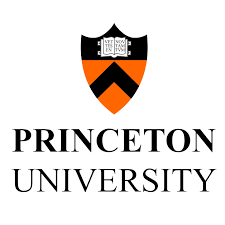
Princeton, New Jersey
In 1746, Princeton University became the fourth educational institution established in the US Princeton’s Physics research rose to prominence a century later thanks to Joseph Henry’s studies on electromagnetic induction.
- The Ph.D. program in Physics requires students to complete the required coursework within the first two years of study. A career development course, Communicating Physics, is also required.
- The preliminary exams must be taken within their first year of study. Some of the topics covered by the exam are quantum mechanics and thermodynamics.
- An experimental project must be presented before the culmination of Year 2. Students are strongly advised to begin preparations for this as early as their first term.
- Students can apply for any external fellowships, grants, and prizes to help fund their doctoral study and research. Travel funds are available for students partaking in other academic endeavors outside of Princeton.
The department offers 11 research areas from which students can choose to conduct research. Some of the notable areas include Condensed Matter Experiment and Theory, High Energy Experiment and Theory, and Particle Phenomenology, to name a few. Princeton Physics is also home to 5 research centers . The NSF funded three of these, including the IRIS-HEP software center, which provides advanced information systems to the Large Hadron Collider at CERN.
Albert Einstein held an academic residency at Princeton, specifically at the Mathematics building, during the 1930s. He accepted an offer from the university’s Institute of Advanced Study as a researcher. Though he was not employed as a university faculty, he delivered lectures at Princeton and other American universities.
University of California – Santa Barbara
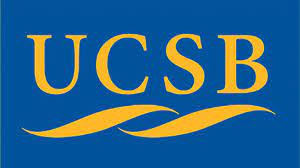
Santa Barbara, CA
Ph.D. in Physics and Ph.D. in Physics with Astrophysics Emphasis
After its incorporation into the UC system in 1936, not only did UCSB carry a new, but a new location as well, and this time, facing the sea with a two-mile-long shoreline. UCSB’s Department of Physics was launched in 1944 and continues to carry the reputation of being “ relatively small ” yet, a powerhouse in physics research and education.
- The department offers the Physics Ph.D. degree with two concentrations: the General Track and the Astrophysics track . Both tracks will require a candidacy exam and a dissertation defense for completion.
- Both tracks also require the completion of courses in Quantum Mechanics, Electromagnetic Theory, and Statistical Mechanics.
- Students under the General track are required to demonstrate knowledge of Lagrangian Mechanics. In contrast, those under the Astrophysics track must take any five of the following courses: Galactic Dynamics, Interstellar Medium, Extragalactic Astrophysics, Stellar Structure and Evolution, High Energy Astrophysics, and Cosmology.
- First and second-year students are guaranteed funding through TA or RA positions. There are five fellowships available through the department and many other opportunities through the UCSB Graduate Division .
UCSB Physics researches eight areas of physics and houses and co-manages ten research centers, including Microsoft Station Q, which focuses on quantum physics. It is home to more than 20 research groups, including the Young Lab Group , helmed by Prof. Andrea Young. The group consists of post-doc, graduate, and undergraduate students and conducts studies on quantum materials through nanofabrication techniques and electronic measurement.
UCSB is the only educational and research institution in the US situated within walking distance of the beach. So, if you hit a snag in your research and feel burned out, remember that the sea is just right outside.
Stanford University
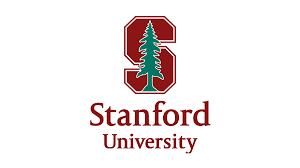
Stanford, CA
Stanford University was established in 1891, and the same year, the Department of Physics was also instituted. Research at the university first reached its peak during the 1930s, through prominent figures such as Felix Bloch, who discovered spin waves and was also Stanford’s first Nobel Prize recipient, for his collaborative work involving Nuclear Magnetic Resonance (NMR).
- Stanford’s doctoral program in Physics requires the completion of the following courses: Statistical Mechanics, Classical Electrodynamics, Research Activities at Stanford, and Teaching of Physics Seminar. A course on either Quantum Mechanics or Quantum Field Theory is also required.
- In addition, the following mathematics courses are also required: Complex Variable Functions, Linear Algebra and Matrix Theory, Complex Analysis, Partial Differential Equations, and Mathematical Methods.
- Students are also required to teach for at least three quarters to complete the Ph.D. program.
- First-year Ph.D. students are guaranteed funding through RA or TA work . Internal fellowships are available on a nomination basis. Students can also apply for the Knight-Hennesy Scholarship for graduate students and external fellowships, such as the NSF.
The department has and continues to produce research in seven different areas of physics. Some of the department’s most applauded and popular research are the ones done on theoretical, observational, and experimental astrophysics and cosmology.
The Kavli Institute for Particle Astrophysics and Cosmology, or KIPAC , and the Stanford Linear Accelerator Center, or SLAC , were both established to deeply explore how the fundamental physical forces in the universe can be dissected, simulated, analyzed, and applied to other industries such as biotechnology, medicine, agriculture, geodetic science, and engineering, among many others. KIPAC is housed within SLAC, and the Department of Energy funds both entities.
University of Colorado – Boulder
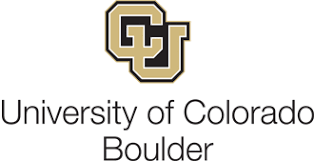
Boulder, CO
The University of Colorado – Boulder (CU Boulder) is a publicly funded research institution belonging to the elite group of the American Association of Universities (AAU) , along with 63 other universities. Established in 1876, CU Boulder has produced acclaimed research and innovations in the areas of bio-health, astrophysics, and sustainable energies, all of which are upshots of CU’s formidable physics programs and research.
- The CU Physics Department offers a doctoral program in Physics which requires the completion of 30 credit hours of graduate-level coursework.
- Students must maintain (at least) a 3.0 GPA to stay in the program.
- Students must complete two comprehensive exams and submit and defend a dissertation. The dissertation accounts for 30 credit hours.
- Ph.D. students can explore several funding options, from fellowships to RA or TA positions and award and research grant opportunities.
Doctoral students can choose to research any of the 12 research areas available within the department. These include High Energy Physics, Astrophysics and Planetary Sciences, Plasma Physics, and Biophysics, to name. CU Physics is also home to various research centers and fellowships , such as the Joint Institute for Laboratory Astrophysics (JILA) , the National Institute of Standards and Technology (NIST) , and the Renewable and Sustainable Energy Institute (RASEI) , among many others.
CU Physics offers other interdisciplinary Ph.D. programs such as Geophysics , Applied Physics, and Chemical Physics . The Applied Physics track has four concentrations: Biophysics, Imaging Sciences, Quantum Information Science, and Molecular Physics. Also, the department’s High Energy Physics faculty partook in the historical and collaborative Higgs boson particle discovery in Switzerland’s Large Hadron Collider, which goes to show the world-class caliber of the CU Physics faculty.
University of California – Berkeley

Berkeley, CA
In 1868, the University of California–Berkeley became the state’s first land-grant educational institution and the first school within the UC system. Berkeley’s Department of Physics pioneered high-energy physics research and, decades later, studied dark matter and neutrino science, as well.
- Berkeley’s doctoral degree in Physics is one of the most competitive in the world. Every year, more than 7000 applicants are considered by the department, but only 45 are accepted into the program, which amounts to a 6.4% acceptance rate.
- Ph.D. students must complete two written exams on Classical Physics and Modern Physics before applying for research fellowships.
- Students can choose from any of the seven research areas available at Berkeley Physics. Among these include Plasma and Non-linear Dynamics, Condensed Matter Physics, and Material Science, to name a few.
- Students can fund their studies through RA or TA work or by applying for any of the fellowships, scholarships, or awards offered by the department. Some of the fellowships are aimed at students involved in astrophysics or condensed matter physics studies.
Students can also explore research opportunities in any of Berkeley Physics’ research centers that focus on the following areas: cosmological physics , theoretical physics , and nanoscience and engineering . Students interested in interdisciplinary and collaborative hands-on work can also explore opportunities at the Berkeley Lab and the Space Scienc e Laboratory .
The department is home to the Physics R&D Machine Shop , a materials science and manufacturing haven for physicists. This shop can create and deliver parts for laboratory experiments, demonstrations, and other academic purposes, from metallurgical works like machining, milling, and assembly to computerized manufacturing, CAD/CAM, and 3D printing, this
The University of Chicago
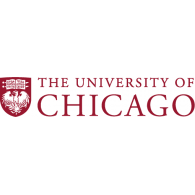
Chicago, IL
Established in 1890, the University of Chicago operates for one purpose: research, or as Chancellor Robert Zimmer puts it, “ inquiry .” The Physics Department, launched in 1893, was the true embodiment of this vision. The succeeding decades saw the department focus on experimental physics, emphasizing replicating previously successful experiments to hone students’ skills and prepare them for original research.
- The department’s Ph.D. program in Physics requires first-year students to complete an experimental physics requirement, either in the form of a course or a project.
- Students are advised to consult the department on the availability of courses as these may change from year to year. Some of the notable courses include Quantum Field Theory, Advanced Data Analysis, and Solid State Physics.
- Students can fund their studies through TA work or internal or external fellowships . The graduate school also offers a travel fund for academic activities outside Chicago, like conferences, lectures, or research.
Chicago is home to ten research areas , which include Quantum Science and Nuclear Physics, among others. There are also ten research centers housed within the university, one of which is the Kavli Institute for Cosmological Physics (KICP). Chicago is also heavily involved in other research centers outside the university, such as Fermilab and CERN.
Chicago’s Physics Department is responsible for many discoveries such as the photon, the nuclear chain reaction, new isotopes, solar wind, and rotating black holes and their properties.
University of Arizona – Tucson

Founded in 1885, the University of Arizona always played an important role in research, particularly space discoveries. From astronomer Gerard Kuiper’s Lunar Maps which aided the first moon landing in 1969 to the OSIRIS-Rex Asteroid study mission , UA consistently makes its mark as a viable and reputable institution for research and development.
- The Ph.D. in Physics program at UA requires the completion of at least 63 credit units, which includes 18 units from dissertation work.
- For the required coursework, including core courses in Analytical, Quantum, and Statistical Mechanics, and Electromagnetic Theory, a minimum GPA of 3.1 must be maintained.
- Students must take six elective courses. Choices include Molecular Biophysics, Plasma Physics, and Optical Physics, among others. Instead of this, an independent study requirement can be undertaken instead.
- UA offers a long list of internal and external fellowships to help students fund their studies. Specific external fellowships for doctoral candidates, women, minorities, and students with disabilities are also available.
The department researches six areas of physics. Some notable areas include Optical Physics and Astrophysics . It is also home to three research facilities: the Biosphere 2, the Life and Planets Astrobiology Center (LAPLACE), and the NSF-funded Accelerator Mass Spectrometry Lab.
Students interested in Applied Physics and Medicine can also join the Master’s Program in Medical Physics . Some of the required coursework includes topics on radiation oncology physics and imaging physics.
Completing the program, a combination of theoretical and applied learning prepares students for the American Board of Radiology certification. They are also eligible to apply to the medical residency program at the Department of Radiation Oncology .
Cornell University

Ithaca, New York
Cornell University was founded in Ithaca, New York, in 1865. In 1872, the university launched the Department of Physics thanks to physicist William Anthony. It conferred its first Ph.D. degree twenty years after the department’s inauguration. From the 1930s to 1940s, the department focused its research on nuclear physics. During the Space Race era, the department established the Laboratory of Atomic and Solid State Physics .
- To be considered, Ph.D. program applicants must have a solid background in quantum mechanics, optics, electronics, and advanced lab familiarity.
- The first two years of study should be spent on completing the required coursework, although preparatory steps to research work, e.g., reaching out to a prospective Ph.D. advisor, during this time are also encouraged.
- Although first-year Ph.D. students are guaranteed funding through TA work, it is strongly advised that they proactively seek funding opportunities through fellowships during their first year.
- Several fellowship opportunities are available which students can explore after their first year. One of which is the NSF Graduate Research Fellowship Program (GRFP) which accepts about 200 CGS students per year.
Cornell Physics offers eight research areas , including Experimental Elementary Particle Physics, which students can focus on. The department is also home to nine research institutes that focus on particle physics, atomic physics, high energy physics, materials science, and nanoscience. One example is the Kavli Institute at Cornell (KIC) for Nanoscale Science , funded by the Kavli Institute.
During the 1940s, the Department of Physics welcomed to its faculty two famed physicists who were known for their participation in the Manhattan Project , Richard Feynman, who taught from 1945 to 1951, and Robert Wilson, who taught from 1947 to 1967.
University of Texas – Austin

The University of Texas (UT) in Austin was established in 1883. The Department of Physics was launched a year later. Ten years later, the university’s first master’s degree in Physics was conferred to George W. Pierce. Pierce would later emerge as the pioneer of communications engineering technology.
- The UT Ph.D. in Physics program offers students flexibility in the curriculum, especially those who have already earned a master’s degree. Transfer credits are accepted.
- Instead of a written exam, oral qualifying exams, one via a panel and another via a one-on-one session, are implemented. The topic of the oral exam will center on the student’s dissertation proposal.
- A weekly “Pizza Seminar,” similar to a town hall session, with all faculty members present, is held to help students choose a dissertation topic. Pizza is served during the meetings, such as the name of the event. Students can also take the course Particle Physics: Introduction to Research instead of the weekly session.
- First-year students fund their studies through TA work but are encouraged to supplement this with a fellowship , scholarship , or grant, as well.
The department is home to an extensive list of facilities and equipment to help students and researchers conduct investigations and experiments. The list includes a supercomputer, a cryogenic laboratory, various spectroscopical equipment, and many more.
The Department houses seven research centers and institutes focused on the different areas of physics such as quantum systems, gravitational physics, high energy physics, nonlinear dynamics, particle physics, and fusion studies.
Johns Hopkins University
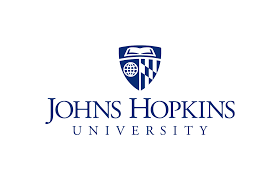
Baltimore, MD
In 1876, Johns Hopkins University (JHU) was established as the first educational institution with a heightened focus on research. Every member of its faculty is involved in different studies and research, a tradition that continues today. Graduate students, especially those under the Department of Physics and Astronomy, are expected to be involved in original investigative work as early as their first semester.
- The department offers two Ph.D. programs – one in Physics and one in Astronomy.
- Students under the Physics track must take courses on electromagnetic theory, quantum mechanics, and advanced statistical mechanics.
- Students under both tracks are expected to take and pass the departmental exam before starting their second year of studies. They should also have an official thesis adviser by the end of their second year.
- Students must also maintain a grade of at least B- for every course.
- Most Ph.D. students at JHU receive full funding for at least five years through three common pathways: RA work, TA work, and fellowships .
The department researches six areas of physics . Their work in Condensed Matter Physics is complemented by the department’s own Raman scattering machine housed at the Raman Laboratory.
JHU’s Department of Physics and Astronomy is well-equipped. Not only does it have its clean room, but it also has at least five furnaces, two magnetometers, various X-ray and spectroscopic equipment, and much more. It also has its machine shop , capable of designing and creating materials for investigations and experiments,
Purdue University
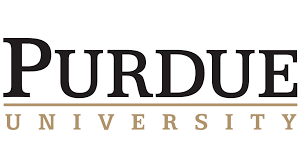
West Lafayette, IN
Established in 1862, Purdue University is a land-grant educational institution that used to be an A&M (agricultural and mechanical) college. Physics courses were taught at the university by 1874, but it wasn’t until 1904 that the discipline would have a department.
- The department offers two Ph.D. tracks, a Physics track, and an Astrophysics track.
- The Ph.D. in Physics program requires students to complete all necessary coursework within their first year.
- Various funding opportunities are available to students. Faculty members with open RA and TA positions are posted on the department’s website. Students must apply to external fellowships and grants/awards for augmented funding.
- Students in both physics and astrophysics tracks can specialize in computational science and engineering (CSE) on top of their doctoral studies. Some of the courses prescribed in the CSE curriculum include Scientific Visualization, Statistical Machine Learning, AI, and Optimization Methods for Systems and Control, among many others.
Purdue Physics conducts studies in ten research areas . Some of the notable and distinct focus areas include Planetary Physics and Geophysics, and Quantum Information Science. The department also holds regular seminars in these focus areas.
Purdue Physics collaborates with other departments and the university’s other research institutes located in the “Discovery Park” area campus. For biophysics, there is the Bindley Bioscience Center . For nanoscience, there is the Birck Nanotechnology Center .
For particle and accelerator physics, there is the Purdue Rare Isotope Measurement Laboratory or the PRIME Lab . And for quantum physics and atomic and molecular optics (AMO), there is the Purdue Quantum Science and Engineering Institute .
Georgia Institute of Technology
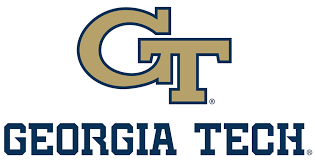
Atlanta, Georgia
Established in 1885, Georgia Tech was originally a trade school with a focus on engineering. Its transformation to a research university mirrored the state’s transformation from agrarian and skilled-trade roots to an industrial hub driven by research and development.
While physics has long been taught at the university, it wasn’t until 1938 that the discipline would have its own home.
- The Ph.D. in Physics program requires the completion of the required coursework and passing the candidacy exam before the doctoral research or dissertation.
- Students are also required to undertake seminars and complete specialized problem sets.
- Ph.D. students who are in good standing are guaranteed funding that covers tuition and health insurance, at the very least.
- Students also can cross-enroll in other interdisciplinary doctoral programs such as the Quantitative Biosciences Ph.D. program or the Computational Science and Engineering (CSE) Ph.D. program . Students must consult their advisers on how to streamline their curriculum to avoid redundant courses. A master’s degree in Robotics is also available as a top-up degree option.
Georgia Tech has six physics areas for research work. Some notable areas of focus include Non-linear Physics, Astroparticles, and Soft Matter Physics, to name a few. The department also houses two research centers: the Center for Non-linear Science and the Center for Relativistic Astrophysics (CRA) .
In collaboration with UC Santa Barbara, Georgia Tech is currently doing groundbreaking – literally – investigations on the subterranean landscape , using a robot that can burrow through soft ground, like sand, for example. This is an interdisciplinary research endeavor co-founded by several government agencies like the NSF, NASA, and the Army Research Office.
University of Illinois – Urbana-Champaign (UIUC)
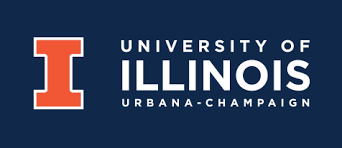
The University of Illinois is a research and academic hub founded in 1867. It is known to spearhead groundbreaking research such as digital education with PLATO , LED technology, Magnetic Resonance Imaging, or MRI, which is the pride of UIUC’s Department of Physics. Its doctoral offering requires the completion of 96 credit units, including individual research and a dissertation.
- Students can choose from any of the department’s eight research areas , which include Nuclear Physics, High Energy Physics, and Condensed Matter Physics, to name a few.
- Students are also strongly encouraged to take courses on Quantum Mechanics, Mathematical Methods, Statistical Physics, and Classical Electromagnetism in preparation for research work.
- Theoretical Astrophysics
- Biomolecular Physics
- Emergent States of Matter
- Subatomic Physics
- Quantum Optics and Information
- Modern Atomic Physics
- Examinations are required before undertaking research work for dissertation submission and defense.
Standout Features of the Program:
This is one of the top 20 doctoral physics programs in the US, according to Clarivate Analytics, currently ranking 15 th (24 th best in the world). The department receives close to $30 million in funding annually from the NSF and other benefactors.
The department is home to thirteen Nobel Prize laureates . In 2003, it took home two prizes – one for Physics, through Dr. Anthony J. Leggett’s research on superconductors and super-fluids, and the other for Medicine, through Sir Peter Manfield’s discovery of MRI and its use in Medicine.
Columbia University
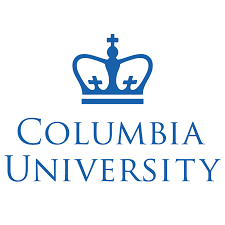
New York, NY
Columbia University is New York’s oldest university, founded in 1754. It is also the fifth university to be instituted in the US. More than a hundred years later, the Department of Physics was established.
The Pupin Hall, which houses the department and the Pupin Laboratory, was named after long-serving department chair, physicist Michael Pupin. He spearheaded the development of a cyclotron which was instrumental to the Manhattan Project research of the 1940s.
- The department offers three graduate degrees in Physics – an MA, an M.Phil., and a Ph.D. This contrasts with other universities that only offer a Ph.D. program in Physics, with the MA as an in-progress conferment.
- The department requires students to have earned an MA and then an M.Phil. in Physics, which equals three years of study. During this time, students would need to complete 30 credits of coursework in preparation for the doctoral qualifying exams and research.
- The qualifying exam is divided into four parts: Classical Physics, Modern Physics, General Physics, and an Oral Exam.
- During the first two years in graduate school, funding can come from teaching laboratory classes and supervising problem sets. Students can also explore other sources of funding like fellowships and awards.
The department conducts research in different interdisciplinary areas of physics such as Biology, High Energy Nuclear and Particle Physics, Molecular and Atomic Physics, Astrophysics, Gravitational Waves, and Cosmology, to name some.
Aside from Columbia’s pivotal role in the Manhattan Project (the isolation of Uranium isotope 235, elemental to the atomic bomb creation), the university also saw the establishment of the American Physical Society .
University of Pennsylvania

Philadelphia, PA
The University of Pennsylvania is one of America’s oldest universities. Founded in 1740, this Ivy League school has always been known for its top-caliber faculty and graduates. Its Department of Physics and Astronomy is one of the smallest heads, but its heightened focus and successful discoveries in key physics areas make its mark on the world stage.
- The Ph.D. program in Physics requires the completion of 20 credit units (each course equals one credit). Courses on statistical, mathematical, and quantum mechanics and electromagnetism are all required. For these core courses, a minimum grade of B+ must be maintained.
- Upon completing the core courses, the oral candidacy exam must be undertaken as soon as possible, or at most, 18 months after passing the courses.
- Students are encouraged to conduct original interdisciplinary research for their dissertations to compel them to collaborate with scholars from other departments.
- Internal and external fellowships are available to help students with funding.
The department categorizes its research areas into three main topics:
- Condensed Matter, which includes subtopics like soft and living matter, and biophysics,
- Astronomy, which includes subtopics like dark matter and dark energy, and,
- Particle Physics involves collaborative work in high-energy physics, neutrino physics, String theory, and cosmology.
UPenn’s work in Particle Physics features collaborations with renowned research centers that have resulted in groundbreaking physics discoveries. Some of these include:
- The unearthing of the neutrino mass through research conducted at the Sudbury Neutrino Observatory (SNO),
- Experiments at the Large Hadron Collider resulted in the discovery of the Higgs boson,
- Detection of the top quark through the joint effort of the UPenn and Fermilab teams.
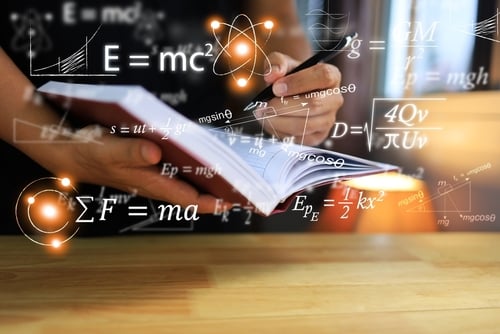
FREQUENTLY ASKED QUESTIONS
What is a doctor of general physics graduate program .
A Doctor of General Physics graduate program or a Ph.D. program in Physics is a research program that requires students to take a few core courses in preparation for dissertation work .
Compared to undergraduate or master’s degrees, which usually culminate with a choice between a capstone project, a thesis, or a practicum, a doctoral or Ph.D. program, especially in Physics, will always culminate with a dissertation proposal, and then, the public defense.
Most doctoral programs in Physics accept students straight out of the undergraduate level, which would seem like the doctoral program is a twofer – a master’s and a Ph.D. program rolled into one, which it is.
However, applicants must remember that most of these programs only confer the master’s degree in Physics once the student’s dissertation has been accepted by the department, meaning the student is moving on into the actual doctoral phase of the program, which is now all about the execution of the accepted dissertation topic.
A terminal master’s degree in Physics is rarely available, and Physics schools rarely accept applicants who only intend to earn a master’s degree.
What are the benefits of a General Physics doctorate?
A doctorate in Physics pays well. BLS reports that in 2023, physicists with a Ph.D. earned a median salary of close to $155,680 annually . Most physicists are employed by private and government-funded research institutes or centers, and normally, the entry-level requirement is a bachelor’s degree in physics or a related field.
But, undergrads will only land assistantship roles unless they apply to a graduate program. Published and acclaimed research increases a physicist’s marketability to join a renowned research facility or group , especially at the graduate level.
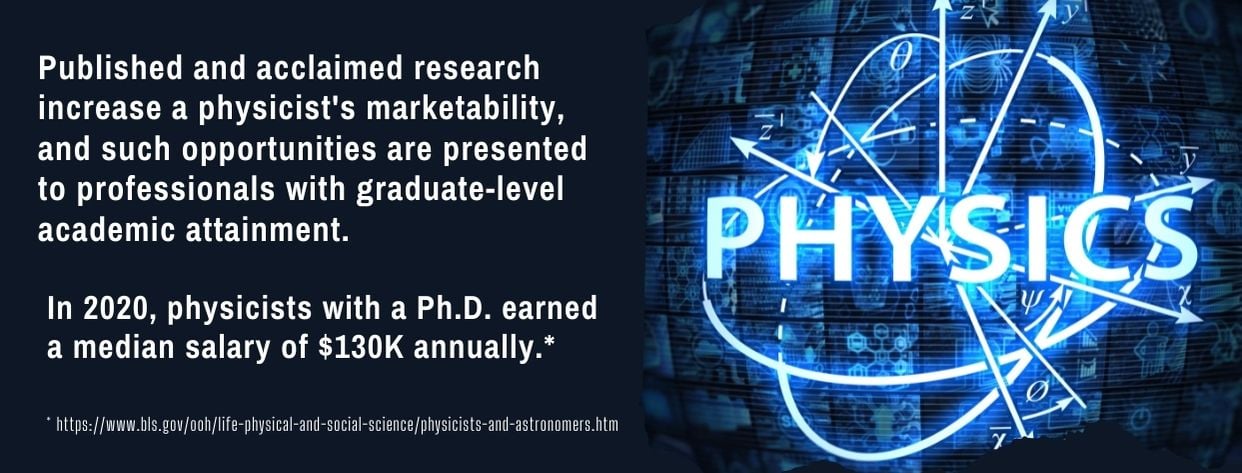
Who can apply to the program?
Most Physics Ph.D. programs will accept students with a bachelor’s degree in Physics or a related degree.
Otherwise, students can still be accepted into programs provided they can demonstrate competency in the following core physics courses: quantum mechanics, electromagnetic theory, statistical mechanics, and mathematical physics.
College graduates with a strong background in advanced mathematics, computational science, and engineering may also be a good fit for such a program.
Are GRE scores required? What are the other admission requirements?
GRE scores , as of writing, are optional, with some universities not requiring it at all. But make sure to check with the department’s admission office to confirm as GRE policies may change.
Other requirements are the usual ones required by graduate schools, such as letters of application, transcripts, essays, letters of recommendation, and a CV.
What are the usual degree requirements?
Accepted grad school entrants who still have to earn their master’s degree must complete a specific number of coursework credits. These need to be completed during the first two years of study.
Some rigorous programs are more stringent, requiring students to complete the coursework within the first year, with an added requirement of independent research to be presented and defended by the end of the second year of study.
A candidacy exam, which is usually oral, sometimes written, or a combination of both is required of students after completing the required coursework and before (or simultaneous with) the presentation of a dissertation proposal. This exam gauges the student’s core competency and readiness for doctoral research.
Once the committee has accepted the dissertation, which is usually in year 5 or 6, some programs require students to take another exam, usually an oral exam, synonymous with the dissertation defense. Once passed, the degree of Doctor of Philosophy in Physics can be awarded to the student.
How long does getting a Doctorate in Physics take, and is it worth the time and money?
Getting a Doctorate in Physics typically takes 3 to 5 years (or possibly more) of study and research. It is worth the time and money if you are looking to pursue a career in academia, research, or the technical industry.
In addition to increased job options, people with a doctorate usually have higher salaries and an edge in the job market. On the other hand, if you are looking to pursue a career in a different field, a Doctorate in Physics may not necessarily be the best investment.
Additional Resources:
- How to Become a Physicist
- What are the 5 Main Branches of Physics?
- Most Popular Doctorate Degree Programs
Related Posts

We’re certain of one thing—your search for more information on picking the best graduate degree or school landed you here. Let our experts help guide your through the decision making process with thoughtful content written by experts.
2024 Best Physics Doctor's Degree Schools
Choosing a great physics school for your doctor's degree, quality overall is important, average earnings, other factors we consider, more ways to rank physics schools, best schools for doctorate students to study physics in the united states, 15 top schools for a doctorate in physics.
Doctorate recipients from the physics program at University of Arizona get $7,483 above the standard college grad in this field shortly after graduation.
Doctorate students who receive their degree from the physics program earn an average of $75,527 in the first couple years of their career.
After graduation, physics doctorate recipients typically make an average of $79,371 in their early careers.
Honorable Mentions
| Rank | College | Location |
|---|---|---|
| 16 | Los Angeles, CA | |
| 17 | Austin, TX | |
| 18 | Pasadena, CA | |
| 19 | Rochester, NY | |
| 20 | La Jolla, CA | |
| 21 | Ames, IA | |
| 22 | Charlottesville, VA | |
| 23 | Irvine, CA | |
| 24 | Madison, WI | |
| 25 | Amherst, MA |
Physics by Region
| Region |
|---|
Other Rankings
Best associate degrees in physics, best master's degrees in physics, best value in physics, best for non-traditional students in physics, best online in physics, most popular online in physics, best bachelor's degrees in physics, best overall in physics, highest paid grads in physics, best for veterans in physics, most popular in physics, most focused in physics, physics related rankings by major, physics concentrations.
| Major | Annual Graduates |
|---|---|
| 1,623 | |
| 66 | |
| 49 | |
| 5 | |
| 3 | |
| 3 | |
| 2 | |
| 1 |
Most Popular Majors Related to Physics
| Related Major | Annual Graduates |
|---|---|
| 2,721 | |
| 734 | |
| 170 | |
| 144 | |
| 125 | |
| 34 | |
| 32 | |
| 14 |
Notes and References
Popular reports, compare your school options.
- EN Action Another action
Thanks for visiting TopUniversities.com today! So that we can show you the most relevant information, please select the option that most closely relates to you.
- Looking for undergraduate studies
- Looking for postgraduate studies
- Student but not looking for further education at the moment
- Parent or Guardian
- University administrator
- Professional
Thanks for sending your response.
Your input will help us improve your experience. You can close this popup to continue using the website or choose an option below to register in or login.
Already have an account? Sign in
QS World University Rankings by Subject 2024: Physics & Astronomy
Discover which universities around the world are the best for physics & astronomy with the QS World University Rankings by Subject 2024.
Massachusetts Institute of Technology (MIT) has been ranked as the best university for studying physics once again this year, ranked ahead of Harvard University which retains second place.
The only movement within the top 10 this year is the University of Tokyo swapping places with Princeton University to now be ranked ninth instead of 10th.
Register for free site membership to access direct university comparisons and more
Find your perfect program!
Answer a few questions and our program matching tool will do the rest!
Filtered by:
Country/Territory
Published on: 10 April 2024
Results per page:
1-10 of 1000
† Corrections to university performance may be made after publication. You can view the release version and a summary of any edits here .
Filter Ranking Indicators
Recommended articles.

Get the latest student and graduate news straight to your inbox.

Use our tool to find your perfect course. Answer a few questions and we will do the rest!

Our expert teams are here to help start your academic journey by guiding you through the application process.

- Find your perfect University program with our matching tool
- Meet and apply to universities
- Connect with peers
Discover top-ranked universities!
universities
events every year
Sign up to continue reading
Doctoral Program (Ph.D.)
- Graduate Programs
The Physics Ph.D. program provides students with opportunities to perform independent research in some of the most current and dynamic areas of physics. Students develop a solid and broad physics knowledge base in the first year through the core curriculum, departmental colloquia, and training.
Upper-level courses and departmental seminar series subsequently provide more specialized exposure. Armed with the core knowledge, doctoral students join a research group working in an area of particular interest. This research is performed in very close collaboration with one or more faculty whose interests span a wide range of physics fields.
Applicants are expected to have a strong background in physics or closely related subjects at the undergraduate level. All applications are evaluated holistically to assess the applicant's preparation and potential for graduate coursework and independent research, which can be demonstrated in multiple ways.
Submitting General and Physics GRE scores is recommended (but not required), especially for non-traditional students (this includes applicants with a bachelor's degree outside of physics or applicants who have taken a long gap after completing their bachelor's degree).
Three recommendation letters from faculty or others acquainted with the applicant's academic and/or research qualifications are required.
If you have submitted an application and need to make changes or add to the application, do not send the materials to the Physics department. The department is unable to alter or add to your application. Contact the Graduate School staff for all changes.
Ph.D. Program Milestones and Guideposts
- Work toward joining a research group
- Pass 3 courses per semester if a TA or 4 courses per semester if a Fellow with at least 50% B's or better
- Complete 6 core courses (PHYS 2010, 2030, 2040, 2050, 2060, 2140)
- Begin research
- Complete PHYS2010 (or other core courses) if not taken during Year 1
- Complete at least 2 advanced courses
- Pass qualifying exam
- Complete 2nd Year Ethics Training
- Identify prelim committee
- Continue research
- Complete remaining advanced courses
- Pass preliminary exam and advance to candidacy
- Complete thesis research
- Write and defend thesis
Ph.D. Resources
- Ph.D. Program Student Handbook
- Graduate Core Course Listing
- Finding a Research Group
- Comprehensive Exam Information
- Ph.D. Second Year Ethics Training Requirement
- Ph.D. Preliminary Exam Requirements and Guidelines
- Ph.D. Prelim Form
- Physics Department Defense Form
- Ph.D. Dissertation Defense Requirements and Guidelines
- Ph.D. Course Waiver/Permission Form
- Bachelor of Science in Engineering Physics
- Undergraduate Student Organizations
- Undergraduate Forms
- Graduate Programs
- Concentrations
- Extracurricular Opportunities
- Research Topics
- Research Groups
- Academic Leadership
- Graduate Students
- Administrative Staff
- Alumni Press Releases
- Get Involved
- Giving Opportunities
- Newsletters
- Recruit Students
- Academic Support
- Community Outreach
- Experience and Employment
- Mental Health Resources
- Student Organizations
Doctor of Philosophy in Applied Physics
Welcome to Cornell University: Any person, any study.
A Flexible, Interdisciplinary Curriculum
The Ph.D. program in the graduate field of Applied Physics is a research-oriented doctoral program tailored to individual interests. The program combines a core physics curriculum with research and study in one of several areas that deal either with the application of physics to a technical discipline or with the interface between physics and another area of science. Students who have majored in physics, in another physical science (for example, chemistry), or in an engineering field are eligible for the program.
The program is designed so that students can evaluate the many different research opportunities available before deciding on an area of specialization. Although most students join the research group of a faculty member in the graduate field of applied physics students may also join a group outside applied physics—a reflection of the tremendous flexibility offered to our graduate students—and begin their thesis research by the end of the first academic year. Most students complete the program under their original faculty supervisor, but if a student should decide to change research groups, the decision is subject only to the agreement of a new thesis supervisor.
Students in applied physics may pursue thesis research in any one of several broad areas, including nanoscience, condensed matter physics and materials science, optical physics, quantum electronics and photonics, biological physics, astrophysics and plasma physics, or atomic, molecular, and chemical physics.
There are 19 faculty members in AEP as well as nearly thirty other faculty members representing ten different departments outside the school which comprise the applied physics field faculty. This large faculty, engaged in many research projects with federal, state, or corporate sponsors, makes it possible for applied physics students to choose thesis research topics from many different areas. While each student becomes an individual investigator responsible for an independent research project, interactive and collaborative research programs and shared research facilities are hallmarks of advanced study at Cornell. The majority of the faculty members in the field participate in one or more of Cornell’s numerous research centers and programs, and most graduate students in applied physics make extensive use of the research facilities maintained by these centers.
Special Committee
Students entering the Applied Physics program begin by taking courses that will meet core requirements. During the first year of study, students choose a major area within applied physics for study and thesis research and a minor area of study that is outside the field of physics or applied physics. Students then choose a special committee of three or four faculty members who will supervise their graduate program and monitor the progress of their thesis research. Ultimately, this faculty committee also approves a student’s thesis. Generally, the chair of the committee is the supervisor of the student’s thesis project, the second member is from the student’s major area of study in applied physics, and the third member represents the minor area of study (as does the optional fourth member). With guidance from this faculty committee, the student plans an individualized course of study that will fulfill the core curriculum and minor subject requirements and will provide the groundwork for full-time thesis research in a particular area of specialization.
- Research Areas
Graduates with doctorates in applied physics pursue careers in academic institutions, corporate and national laboratories, and research institutes. In recent years:

Ph.D. program
The Applied Physics Department offers a Ph.D. degree program; see Admissions Overview for how to apply.
1. Courses . Current listings of Applied Physics (and Physics) courses are available via Explore Courses . Courses are available in Physics and Mathematics to overcome deficiencies, if any, in undergraduate preparation. It is expected the specific course requirements are completed by the end of the 3rd year at Stanford.
Required Basic Graduate Courses. 30 units (quarter hours) including:
- Basic graduate courses in advanced mechanics, statistical physics, electrodynamics, quantum mechanics, and an advanced laboratory course. In cases where students feel they have already covered the materials in one of the required basic graduate courses, a petition for waiver of the course may be submitted and is subject to approval by a faculty committee.
- 18 units of advanced coursework in science and/or engineering to fit the particular interests of the individual student. Such courses typically are in Applied Physics, Physics, or Electrical Engineering, but courses may also be taken in other departments, e.g., Biology, Materials Science and Engineering, Mathematics, Chemistry. The purpose of this requirement is to provide training in a specialized field of research and to encourage students to cover material beyond their own special research interests.
Required Additional Courses . Additional courses needed to meet the minimum residency requirement of 135 units of completed course work. Directed study and research units as well as 1-unit seminar courses can be included. Courses are sometimes given on special topics, and there are several seminars that meet weekly to discuss current research activities at Stanford and elsewhere. All graduate students are encouraged to participate in the special topics courses and seminars. A limited number of courses are offered during the Summer Quarter. Most students stay in residence during the summer and engage in independent study or research programs.
The list of the PhD degree core coursework is listed in the bulletin here: https://bulletin.stanford.edu/programs/APLPH-PHD .
3. Dissertation Research. Research is frequently supervised by an Applied Physics faculty member, but an approved program of research may be supervised by a faculty member from another department.
4. Research Progress Report. Students give an oral research progress report to their dissertation reading committee during the winter quarter of the 4th year.
5. Dissertation.
6. University Oral Examination . The examination includes a public seminar in defense of the dissertation and questioning by a faculty committee on the research and related fields.
Most students continue their studies and research during the summer quarter, principally in independent study projects or dissertation research. The length of time required for the completion of the dissertation depends upon the student and upon the dissertation advisor. In addition, the University residency requirement of 135 graded units must be met.
Rotation Program
We offer an optional rotation program for 1st-year Ph.D. students where students may spend one quarter (10 weeks) each in up to three research groups in the first year. This helps students gain research experience and exposure to various labs, fields, and/or projects before determining a permanent group to complete their dissertation work.
Sponsoring faculty members may be in the Applied Physics department, SLAC, or any other science or engineering department, as long as they are members of the Academic Council (including all tenure-line faculty). Rotations are optional and students may join a group without the rotation system by making an arrangement directly with the faculty advisor.
During the first year, research assistantships (RAs) are fully funded by the department for the fall quarter; in the winter and spring quarters, RAs are funded 50/50 by the department and the research group hosting the student. RAs after the third quarter are, in general, not subsidized by the rotation program or the department and should be arranged directly by the student with their research advisor.
How to arrange a rotation
Rotation positions in faculty members’ groups are secured by the student by directly contacting and coordinating with faculty some time between the student’s acceptance into the Ph.D. program and the start of the rotation quarter. It is recommended that the student’s fall quarter rotation be finalized no later than Orientation Week before the academic year begins. A rotation with a different faculty member can be arranged for the subsequent quarters at any time. Most students join a permanent lab by the spring quarter of their first year after one or two rotations. When coordinating a rotation, the student and the sponsoring faculty should discuss expectations for the rotation (e.g. project timeline or deliverables) and the availability of continued funding and permanent positions in the group. It is very important that the student and the faculty advisor have a clear understanding about expectations going forward.
What do current students say about rotations?
Advice from current ap students, setting up a rotation:.
- If you have a specific professor or group in mind, you should contact them as early as possible, as they may have a limited number of rotation spots.
- You can prepare a 1-page CV or resume to send to professors to summarize your research experiences and interest.
- Try to tour the lab/working areas, talk to senior graduate students, or attend group meeting to get a feel for how the group operates.
- If you don't receive a response from a professor, you can send a polite reminder, stop by their office, or contact their administrative assistant. If you receive a negative response, you shouldn't take it personally as rotation availability can depend year-to-year on funding and personnel availability.
- Don't feel limited to subfields that you have prior experience in. Rotations are for learning and for discovering what type of work and work environment suit you best, and you will have several years to develop into a fully-formed researcher!
You and your rotation advisor should coordinate early on about things like:
- What project will you be working on and who will you be working with?
- What resources (e.g. equipment access and training, coursework) will you need to enable this work?
- How closely will you work with other members of the group?
- How frequently will you and your rotation advisor meet?
- What other obligations (e.g. coursework, TAing) are you balancing alongside research?
- How will your progress be evaluated?
- Is there funding available to support you and this project beyond the rotation quarter?
- Will the rotation advisor take on new students into the group in the quarter following the rotation?
About a month before the end of the quarter, you should have a conversation with your advisor about things like:
- Will you remain in the current group or will you rotate elsewhere?
- If you choose to rotate elsewhere, does the option remain open to return to the present group later?
- If you choose to rotate elsewhere, will another rotation student be taken on for the same project?
- You don't have to rotate just for the sake of rotating! If you've found a group that suits you well in many aspects, it makes sense to continue your research momentum with that group.
Application process
View Admissions Overview View the Required Online Ph.D. Program Application
Contact the Applied Physics Department Office at [email protected] if additional information on any of the above is needed.
William H. Miller III Department of Physics & Astronomy

- Admissions and Transfers
- Graduate Courses
- Degree Forms and Requirements
- Research and Advising
- Graduate Student Examination Guide
- Career Services for PhD Students
- Summer Support and Internships
- Graduate Program Statistics
Graduate programs in physics and astronomy at Johns Hopkins University are among the top programs in the field. Students engage in original research starting in their first semester and have flexibility in choosing their course of research and designing their path through the program. A wide range of research projects—both theoretical and experimental—are available in astrophysics, atomic, molecular & optical physics, biological physics, condensed matter physics, and particle physics. Graduate students can work toward a PhD in either physics or astronomy and astrophysics. Our doctoral students are prepared for careers in physics and astronomy research, teaching, or in applications such as biophysics, space physics, and industrial research.
Graduate students at Johns Hopkins study and work in close collaboration with a world-renowned, award-winning physics and astronomy faculty , whose research is truly global. Students have access to state-of-the-art laboratories, and they are full participants in the vibrant intellectual life of the department. Research leading to the dissertation can be carried out not only within the Department of Physics and Astronomy, but also in collaboration with other research centers. Recent dissertation research has been conducted with members of the Johns Hopkins Applied Physics Laboratory , Space Telescope Science Institute , and the Goddard Space Flight Center .
Graduate students are involved in research projects beginning in their first semester at JHU. Students are free to explore different areas of research by working on short research projects with different advisers. A series of seminars, presentations and orientation events held in the fall semester help introduce students to the faculty in the department so that they can choose their first project. Such projects may last a semester or a year; they might become the prelude to their thesis work or may focus on a completely separate topic. In many cases, the projects lead to published research papers. By the end of their second year, students have typically completed their required graduate classes, have explored several different research directions and are in a good position to choose a thesis topic and a thesis advisor. Students start thesis research no later than fall of their 3rd year and graduate at the end of the 5th or 6th year.
It is departmental policy that all graduate students in good standing are supported through fellowships, research assistantships and / or teaching assistantships for up to six years. The financial package covers the tuition and student health insurance, and provides a stipend commensurate with that of other leading research institutions. We have designed our graduate program in such a way that indeed most students earn their PhD in six years or less.
Fellowships
We strongly encourage prospective and enrolled students eligible for external fellowships to apply for them. For graduate students already enrolled, research and academic advisors provide assistance and support in applying for NSF fellowships, NASA fellowships, etc. Faculty and staff nominate graduate students for departmental and university fellowships, and applications are reviewed by the graduate program committee and / or the department chair.
The University Research Office maintains an up-to-date list of graduate student funding opportunities .
Teaching and research assistantships
Teaching and research assistantships are equivalent in terms of stipend and benefits. Most students are supported by teaching assistantships during their first year. In subsequent years, they may be supported by teaching assistantships or research assistantships depending on availability of external funding and research performance. Students should discuss funding options with their advisors well in advance of the semester in question. Teaching assistantships in year six and beyond should be requested by the student and the advisor by application to the graduate program committee. Continuation in the program and financial support of any kind in year seven and beyond should also be requested by the student and the advisor by application to the graduate program committee. In evaluating these requests, the graduate program committee takes into consideration whether the student is on a clear path to graduation, whether the student is making good progress and whether the extension is necessitated by the scope of the thesis.
- Graduate Student Handbook
- Mentorship Guidelines
Graduate Policies
Statement of the rights and responsibilities of phd students at johns hopkins university.
Ph.D. education is fundamental to the University’s teaching and research mission. For an intellectual community of scholars to flourish, it is important to acknowledge the principles that underlie the compact between Ph.D. students, the faculty, and other members of the University community.
It is in this spirit that the Doctor of Philosophy Board, in collaboration with faculty and students from across the University, has articulated a statement of rights and responsibilities for doctoral students at Johns Hopkins. The principles described in this document are to be realized in policies established by the various Schools of the University; the Schools will also develop mechanisms to monitor and enforce such policies.
- Academic and Research Misconduct Policy
- Assistant Leave Policy
- Grievance Policy
- Jury and Witness Duty
- Homewood Schools Policy for Graduate Student Probation, Funding Withdrawal, and Dismissal
- Information Technology Policy
- Managing the Conversation: Inform, Support, and Report Quick Reference Guide for Responding to Staff and Faculty Discrimination, Harassment & Sexual Misconduct Disclosures
- Managing the Conversation: Inform, Support, and Report Quick Reference Guide for Responding to Student Discrimination, Harassment & Sexual Misconduct Disclosures
- Zanvyl Krieger School of Arts and Sciences Office of the Dean & Leadership
Graduate Board
The Homewood Graduate Board is a subcommittee of the Academic Council of the Schools of Arts and Sciences and Engineering, and is responsible for the administration of policies and procedures for the award Doctor of Philosophy, PhD of the Schools of Arts and Sciences and Engineering, and for master’s degrees in the School of Arts and Sciences.
Office of Institutional Equity – Title IX Information
Title IX of the Education Amendments of 1972 (“Title IX”) prohibits discrimination with a basis on sex in any federally-funded education program or activity. Title IX affects almost every facet of JHU.
- Make a Gift
- Directories
Search form
You are here.
- Programs & Courses
PhD Program
A PhD degree in Physics is awarded in recognition of significant and novel research contributions, extending the boundaries of our knowledge of the physical universe. Selected applicants are admitted to the PhD program of the UW Department of Physics, not to a specific research group, and are encouraged to explore research opportunities throughout the Department.
Degree Requirements
Typical timeline, advising and mentoring, satisfactory progress, financial support, more information.
Applicants to the doctoral program are expected to have a strong undergraduate preparation in physics, including courses in electromagnetism, classical and quantum mechanics, statistical physics, optics, and mathematical methods of physics. Further study in condensed matter, atomic, and particle and nuclear physics is desirable. Limited deficiencies in core areas may be permissible, but may delay degree completion by as much as a year and are are expected to remedied during the first year of graduate study.
The Graduate Admissions Committee reviews all submitted applications and takes a holistic approach considering all aspects presented in the application materials. Application materials include:
- Resume or curriculum vitae, describing your current position or activities, educational and professional experience, and any honors awarded, special skills, publications or research presentations.
- Statement of purpose, one page describing your academic purpose and goals.
- Personal history statement (optional, two pages max), describing how your personal experiences and background (including family, cultural, or economic aspects) have influenced your intellectual development and interests.
- Three letters of recommendation: submit email addresses for your recommenders at least one month ahead of deadline to allow them sufficient time to respond.
- Transcripts (unofficial), from all prior relevant undergraduate and graduate institutions attended. Admitted applicants must provide official transcripts.
- English language proficiency is required for graduate study at the University of Washington. Applicants whose native language is not English must demonstrate English proficiency. The various options are specified at: https://grad.uw.edu/policies/3-2-graduate-school-english-language-proficiency-requirements/ Official test scores must be sent by ETS directly to the University of Washington (institution code 4854) and be received within two years of the test date.
For additional information see the UW Graduate School Home Page , Understanding the Application Process , and Memo 15 regarding teaching assistant eligibility for non-native English speakers.
The GRE Subject Test in Physics (P-GRE) is optional in our admissions process, and typically plays a relatively minor role. Our admissions system is holistic, as we use all available information to evaluate each application. If you have taken the P-GRE and feel that providing your score will help address specific gaps or otherwise materially strengthen your application, you are welcome to submit your scores. We emphasize that every application will be given full consideration, regardless of whether or not scores are submitted.
Applications are accepted annually for autumn quarter admissions (only), and must be submitted online. Admission deadline: DECEMBER 15, 2024.
Department standards
Course requirements.
Students must plan a program of study in consultation with their faculty advisor (either first year advisor or later research advisor). To establish adequate breadth and depth of knowledge in the field, PhD students are required to pass a set of core courses, take appropriate advanced courses and special topics offerings related to their research area, attend relevant research seminars as well as the weekly department colloquium, and take at least two additional courses in Physics outside their area of speciality. Seeking broad knowledge in areas of physics outside your own research area is encouraged.
The required core courses are:
| / / | Electromagnetism |
| / / | Quantum Mechanics |
| / | Statistical Mechanics |
| Classical Mechanics | |
| Introduction to Research | |
| Independent Study/Research |
In addition, all students holding a teaching assistantship (TA) must complete Phys 501 / 502 / 503 , Tutorials in Teaching Physics.
Regularly offered courses which may, depending on research area and with the approval of the graduate program coordinator, be used to satisfy breadth requirements, include:
- Phys 506 Numerical Methods
- Phys 555 Cosmology & Particle Astrophysics
- Phys 507 Group Theory
- Phys 557 High Energy Physics
- Phys 511 Topics in Contemporary Physics
- Phys 560 Nuclear Theory
- Phys 520 Quantum Information
- Phys 564 General Relativity
- Phys 550 Atomic Physics
- Phys 567 Condensed Matter Physics
- Phys 554 Nuclear Astrophysics
- Phys 570 Quantum Field Theory
Graduate exams
Master's Review: In addition to passing all core courses, adequate mastery of core material must be demonstrated by passing the Master's Review. This is composed of four Master's Review Exams (MREs) which serve as the final exams in Phys 524 (SM), Phys 514 (EM), Phys 518 (QM), and Phys 505 (CM). The standard for passing each MRE is demonstrated understanding and ability to solve multi-step problems; this judgment is independent of the overall course grade. Acceptable performance on each MRE is expected, but substantial engagement in research allows modestly sub-par performance on one exam to be waived. Students who pass the Master's Review are eligible to receive a Master's degree, provided the Graduate School course credit and grade point average requirements have also been satisfied.
General Exam: Adequate mastery of material in one's area of research, together with demonstrated progress in research and a viable plan to complete a PhD dissertation, is assessed in the General Exam. This is taken after completing all course requirements, passing the Master's Review, and becoming well established in research. The General Exam consists of an oral presentation followed by an in-depth question period with one's dissertation committee.
Final Oral Exam: Adequate completion of a PhD dissertation is assessed in the Final Oral, which is a public exam on one's completed dissertation research. The requirement of surmounting a final public oral exam is an ancient tradition for successful completion of a PhD degree.
Graduate school requirements
Common requirements for all doctoral degrees are given in the Graduate School Degree Requirements and Doctoral Degree Policies and Procedures pages. A summary of the key items, accurate as of late 2020, is as follows:
- A minimum of 90 completed credits, of which at least 60 must be completed at the University of Washington. A Master's degree from the UW or another institution in physics, or approved related field of study, may substitute for 30 credits of enrollment.
- At least 18 credits of UW course work at the 500 level completed prior to the General Examination.
- At least 18 numerically graded UW credits of 500 level courses and approved 400 level courses, completed prior to the General Examination.
- At least 60 credits completed prior to scheduling the General Examination. A Master's degree from the UW or another institution may substitute for 30 of these credits.
- A minimum of 27 dissertation (or Physics 800) credits, spread out over a period of at least three quarters, must be completed. At least one of those three quarters must come after passing the General Exam. Except for summer quarters, students are limited to a maximum of 10 dissertation credits per quarter.
- A minimum cumulative grade point average (GPA) of 3.00 must be maintained.
- The General Examination must be successfully completed.
- A thesis dissertation approved by the reading committee and submitted and accepted by the Graduate School.
- The Final Examination must be successfully completed. At least four members of the supervisory committee, including chair and graduate school representative, must be present.
- Registration as a full- or part-time graduate student at the University must be maintained, specifically including the quarter in which the examinations are completed and the quarter in which the degree is conferred. (Part-time means registered for at least 2 credits, but less than 10.)
- All work for the doctoral degree must be completed within ten years. This includes any time spend on leave, as well as time devoted to a Master's degree from the UW or elsewhere (if used to substitute for credits of enrollment).
- Pass the required core courses: Phys 513 , 517 , 524 & 528 autumn quarter, Phys 514 , 518 & 525 winter quarter, and Phys 515 , 519 & 505 spring quarter. When deemed appropriate, with approval of their faculty advisor and graduate program coordinator, students may elect to defer Phys 525 , 515 and/or 519 to the second year in order to take more credits of Phys 600 .
- Sign up for and complete one credit of Phys 600 with a faculty member of choice during winter and spring quarters.
- Pass the Master's Review by the end of spring quarter or, after demonstrating substantial research engagement, by the end of the summer.
- Work to identify one's research area and faculty research advisor. This begins with learning about diverse research areas in Phys 528 in the autumn, followed by Phys 600 independent study with selected faculty members during winter, spring, and summer.
- Pass the Master's Review (if not already done) by taking any deferred core courses or retaking MREs as needed. The Master's Review must be passed before the start of the third year.
- Settle in and become fully established with one's research group and advisor, possibly after doing independent study with multiple faculty members. Switching research areas during the first two years is not uncommon.
- Complete all required courses. Take breadth courses and more advanced graduate courses appropriate for one's area of research.
- Perform research.
- Establish a Supervisory Committee within one year after finding a compatible research advisor who agrees to supervise your dissertation work.
- Take breadth and special topics courses as appropriate.
- Take your General Exam in the third or fourth year of your graduate studies.
- Register for Phys 800 (Doctoral Thesis Research) instead of Phys 600 in the quarters during and after your general exam.
- Take special topics courses as appropriate.
- Perform research. When completion of a substantial body of research is is sight, and with concurrence of your faculty advisor, start writing a thesis dissertation.
- Establish a dissertation reading committee well in advance of scheduling the Final Examination.
- Schedule your Final Examination and submit your PhD dissertation draft to your reading committee at least several weeks before your Final Exam.
- Take your Final Oral Examination.
- After passing your Final Exam, submit your PhD dissertation, as approved by your reading committee, to the Graduate School, normally before the end of the same quarter.
This typical timeline for competing the PhD applies to students entering the program with a solid undergraduate preparation, as described above under Admissions. Variant scenarios are possible with approval of the Graduate Program coordinator. Two such scenarios are the following:
- Students entering with insufficient undergraduate preparation often require more time. It is important to identify this early, and not feel that this reflects on innate abilities or future success. Discussion with one's faculty advisor, during orientation or shortly thereafter, may lead to deferring one or more of the first year required courses and corresponding Master's Review Exams. It can also involve taking selected 300 or 400 level undergraduate physics courses before taking the first year graduate level courses. This must be approved by the Graduate Program coordinator, but should not delay efforts to find a suitable research advisor. The final Master's Review decision still takes place no later than the start of the 3rd year and research engagement is an important component in this decision.
- Entering PhD students with advanced standing, for example with a prior Master's degree in Physics or transferring from another institution after completing one or more years in a Physics PhD program, may often graduate after 3 or 4 years in our program. After discussion with your faculty advisor and with approval of the Graduate Program coordinator, selected required classes may be waived (but typically not the corresponding Master's Review Exams), and credit from other institutions transferred.
- Each entering PhD student is assigned a first year faculty advisor, with whom they meet regularly to discuss course selection, general progress, and advice on research opportunities. The role of a student's primary faculty advisor switches to their research advisor after they become well established in research. Once their doctoral supervisory committee is formed, the entire committee, including a designated faculty mentor (other than the research advisor) is available to provide advice and mentoring.
- The department also has a peer mentoring program, in which first-year students are paired with more senior students who have volunteered as mentors. Peer mentors maintain contact with their first-year mentees throughout the year and aim to ease the transition to graduate study by sharing their experiences and providing support and advice. Quarterly "teas" are held to which all peer mentors and mentees are invited.
- While academic advising is primarily concerned with activities and requirements necessary to make progress toward a degree, mentoring focuses on the human relationships, commitments, and resources that can help a student find success and fulfillment in academic and professional pursuits. While research advisors play an essential role in graduate study, the department considers it inportant for every student to also have available additional individuals who take on an explicit mentoring role.
- Students are expected to meet regularly, at a minimum quarterly, with their faculty advisors (either first year advisor or research advisor).
- Starting in the winter of their first year, students are expected to be enrolled in Phys 600 .
- Every spring all students, together with their advisors, are required to complete an annual activities report.
- The doctoral supervisory committee needs to be established at least by the end of the fourth year.
- The General Exam is expected to take place during the third or fourth year.
- Students and their advisors are expected to aim for not more than 6 years between entry into the Physics PhD program and completion of the PhD. In recent years the median time is close to 6 years.
Absence of satisfactory progress can lead to a hierarchy of actions, as detailed in the Graduate School Memo 16: Academic Performance and Progress , and may jeopardize funding as a teaching assistant.
The Department aims to provide financial support for all full-time PhD students making satisfactory progress, and has been successful in doing so for many years. Most students are supported via a mix teaching assistantships (TAs) and research assistantships (RAs), although there are also various scholarships, fellowships, and awards that provide financial support. Teaching and research assistanships provide a stipend, a tuition waiver, and health insurance benefits. TAs are employed by the University to assist faculty in their teaching activities. Students from non-English-speaking countries must pass English proficiency requirements . RAs are employed by the Department to assist faculty with specified research projects, and are funded through research grants held by faculty members.
Most first-year students are provided full TA support during their first academic year as part of their admission offer. Support beyond the second year is typically in the form of an RA or a TA/RA combination. It is the responsibility of the student to find a research advisor and secure RA support. Students accepting TA or RA positions are required to register as full-time graduate students (a minimum of 10 credits during the academic year, and 2 credits in summer quarter) and devote 20 hours per week to their assistantship duties. Both TAs and RAs are classified as Academic Student Employees (ASE) . These positions are governed by a contract between the UW and the International Union, United Automobile, Aerospace and Agricultural Implement Workers of America (UAW), and its Local Union 4121 (UAW).
Physics PhD students are paid at the "Assistant" level (Teaching Assistant or Research Assistant) upon entry to the program. Students receive a promotion to "Associate I" (Predoctoral Teaching Associate I or Predoctoral Research Associate I) after passing the Master's Review, and a further promotion to "Associate II" (Predoctoral Teaching Associate II or Predoctoral Research Associate II) after passing their General Examination. (Summer quarter courses, and summer quarter TA employment, runs one month shorter than during the academic year. To compendate, summer quarter TA salaries are increased proportionately.)
- UW Physics Department fact sheet .
- MyPhys , UW Physics Department intranet with policies and information for enrolled students.
- UW Graduate School information for students and postdocs.
- Events Mailing Lists
- Newsletter
100 Best Physics schools in the United States
Updated: February 29, 2024
- Art & Design
- Computer Science
- Engineering
- Environmental Science
- Liberal Arts & Social Sciences
- Mathematics
Below is a list of best universities in the United States ranked based on their research performance in Physics. A graph of 317M citations received by 9.3M academic papers made by 1,485 universities in the United States was used to calculate publications' ratings, which then were adjusted for release dates and added to final scores.
We don't distinguish between undergraduate and graduate programs nor do we adjust for current majors offered. You can find information about granted degrees on a university page but always double-check with the university website.
1. Massachusetts Institute of Technology
For Physics

2. University of California - Berkeley
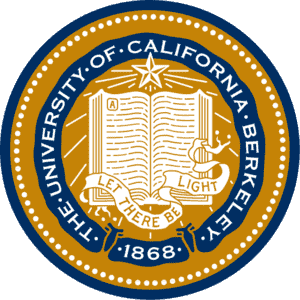
3. Stanford University

4. Harvard University
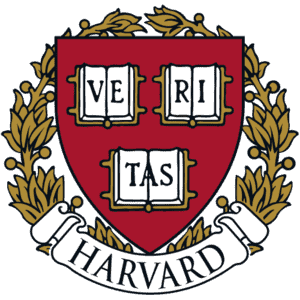
5. University of Michigan - Ann Arbor
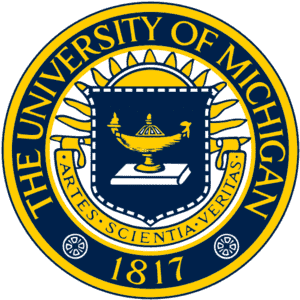
6. University of Illinois at Urbana - Champaign
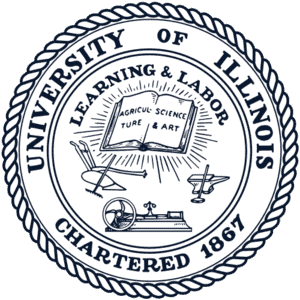
7. University of California - Los Angeles

8. Cornell University

9. Princeton University
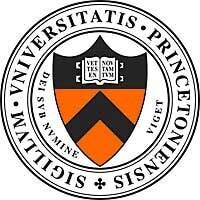
10. University of Washington - Seattle
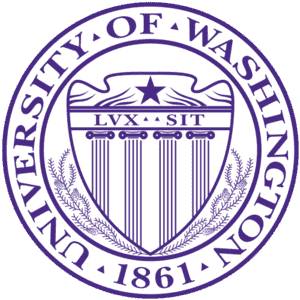
11. California Institute of Technology

12. Pennsylvania State University

13. University of Texas at Austin

14. University of Wisconsin - Madison
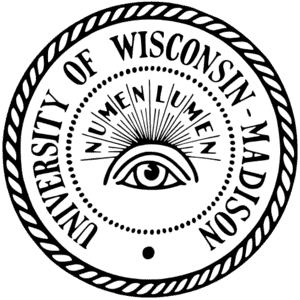
15. University of Minnesota - Twin Cities
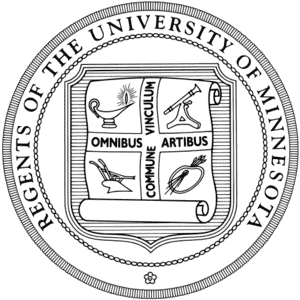
16. University of California-San Diego

17. Georgia Institute of Technology

18. University of Maryland - College Park
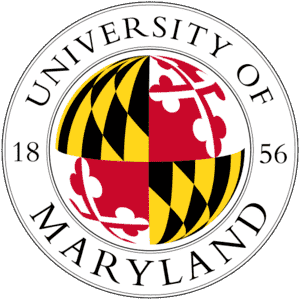
19. University of California - Santa Barbara
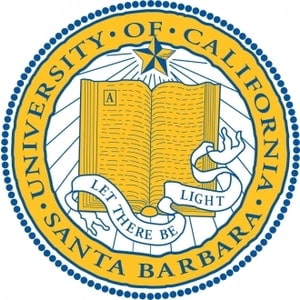
20. Columbia University
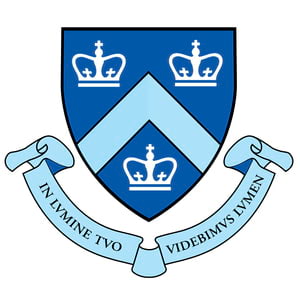
21. University of Pennsylvania

22. Johns Hopkins University
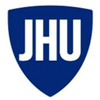
23. Ohio State University
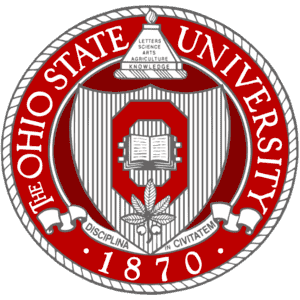
24. Northwestern University
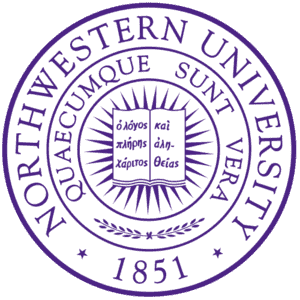
25. Yale University
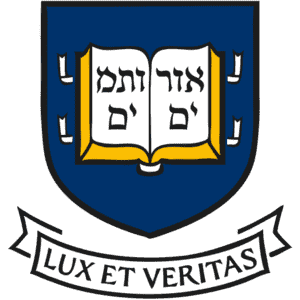
26. Texas A&M University - College Station
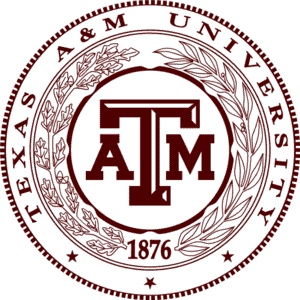
27. Purdue University
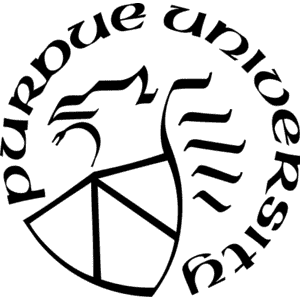
28. University of Chicago

29. University of Florida
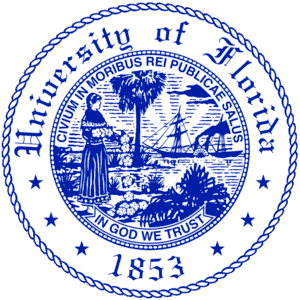
30. University of Arizona

31. University of California - Davis
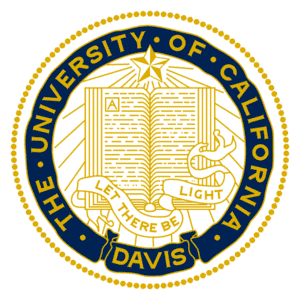
32. University of Southern California

33. Rutgers University - New Brunswick
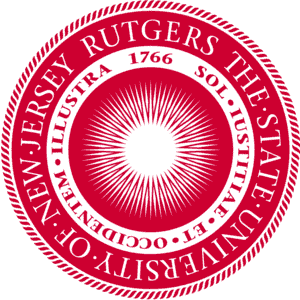
34. Carnegie Mellon University
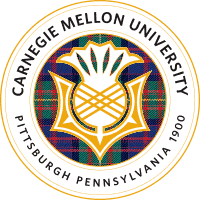
35. University of Colorado Boulder
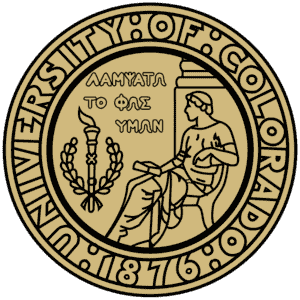
36. Iowa State University

37. Michigan State University
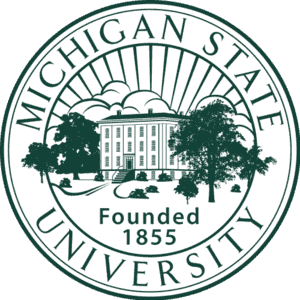
38. Arizona State University - Tempe
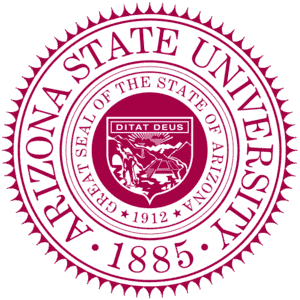
39. University of North Carolina at Chapel Hill
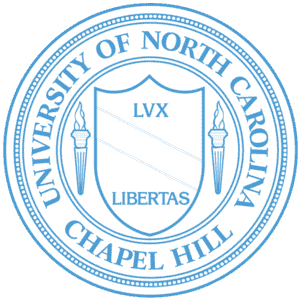
40. New York University
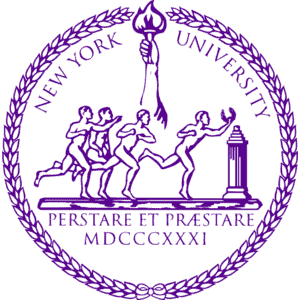
41. North Carolina State University at Raleigh

42. University of Utah
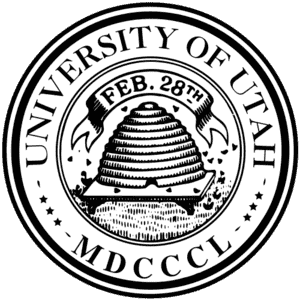
43. Virginia Polytechnic Institute and State University

44. Duke University

45. University of Pittsburgh

46. University of California - Irvine
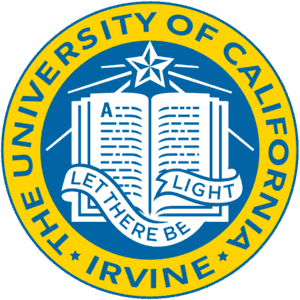
47. Boston University
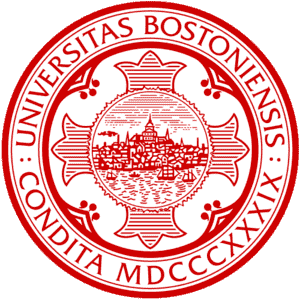
48. University of Virginia

49. University of Rochester
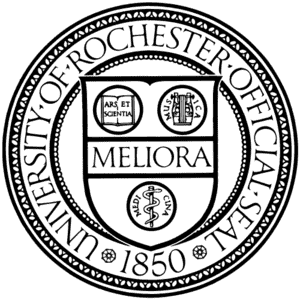
50. Stony Brook University

51. University of California - San Francisco
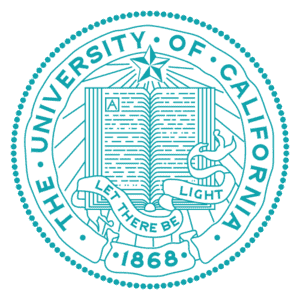

52. Washington University in St Louis

53. Rice University

54. Case Western Reserve University

55. University of Massachusetts - Amherst
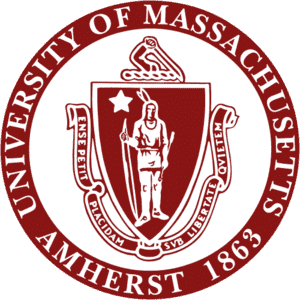
56. University of Tennessee - Knoxville

57. University of Delaware
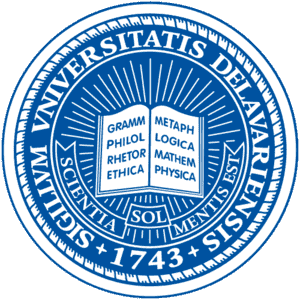
58. Brown University

59. University of Iowa
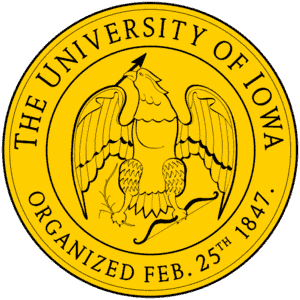
60. Providence College

61. University of Illinois at Chicago

62. University of Notre Dame
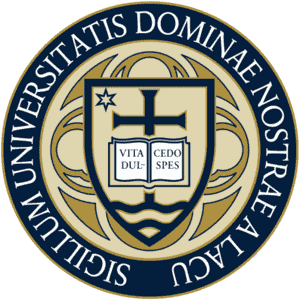
63. University at Buffalo

64. Vanderbilt University
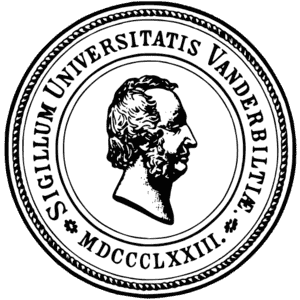
65. Rensselaer Polytechnic Institute

66. University of Connecticut
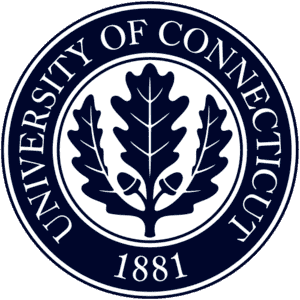
67. University of California - Riverside
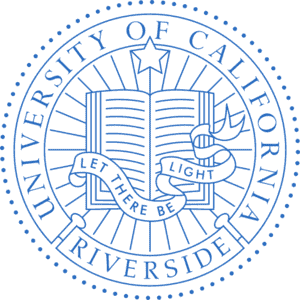
68. Washington State University

69. Florida State University

70. University of Houston
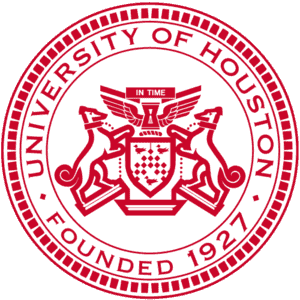
71. University of California - Santa Cruz

72. University of Kentucky
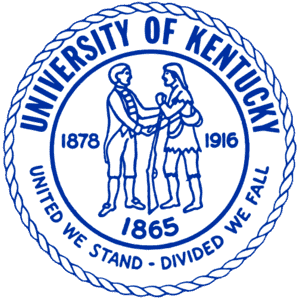
73. University of Georgia
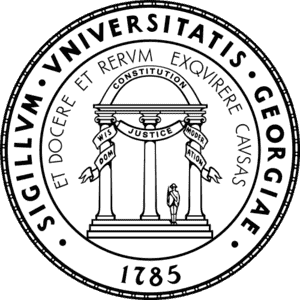
74. Colorado State University - Fort Collins

75. Emory University
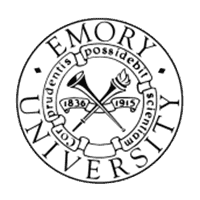
76. Louisiana State University and Agricultural & Mechanical College

77. University of Central Florida
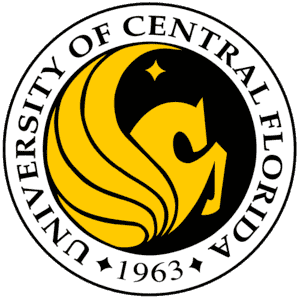
78. University of Cincinnati

79. Oregon State University

80. University of New Mexico
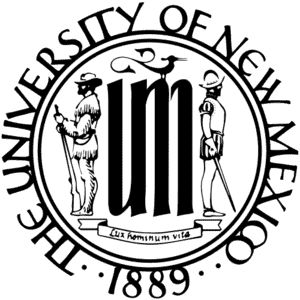
81. University of Missouri - Columbia

82. University of South Carolina - Columbia

83. University of Miami
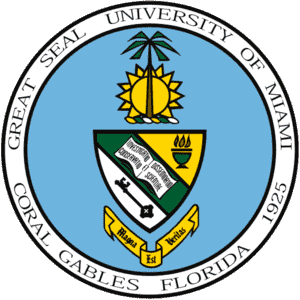
84. University of Nebraska - Lincoln

85. Mayo Clinic College of Medicine and Science
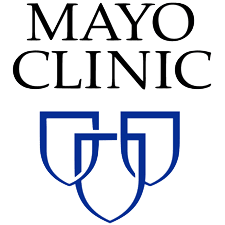
86. Northeastern University

87. Wayne State University
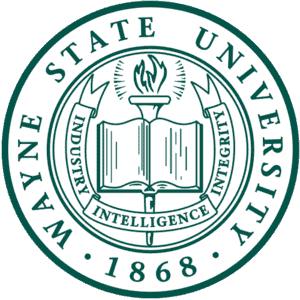
88. Drexel University

89. Clemson University

90. Tufts University

91. Tulane University of Louisiana

92. University of South Florida

93. University of Oklahoma - Norman

94. University of Kansas
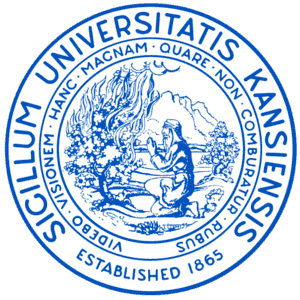
95. Indiana University - Purdue University - Indianapolis
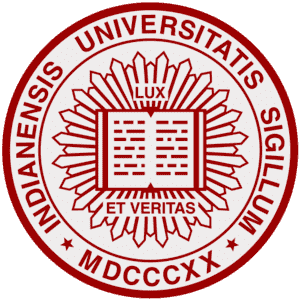
96. Syracuse University
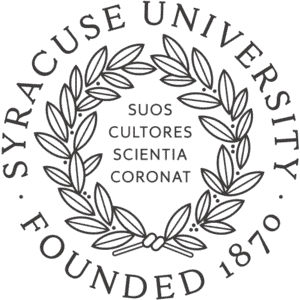
97. University of Maryland, Baltimore

98. University of Alabama at Birmingham

99. Kansas State University
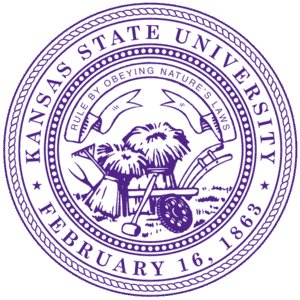
100. University of Texas Southwestern Medical Center

The best cities to study Physics in the United States based on the number of universities and their ranks are Cambridge , Berkeley , Stanford , and Ann Arbor .
Physics subfields in the United States
2100 accredited US Universities for Graduate Programs. 400+ specializations.
1400 No GRE, GMAT schools for the Master’s program
700+ Graduate scholarships totaling $3.5 mm
Doctoral / PHD Programs in Physics
PhD programs in Physics are advanced educational paths designed to empower students to delve into various aspects of physics, both in theory and practice. These programs usually require several years of committed study beyond undergraduate or master's levels. At the heart of earning a PhD in Physics lies the dissertation, a significant piece of independent research that contributes fresh insights to the field. Additionally, these programs encourage collaboration across disciplines, fostering an environment where students can engage in diverse academic exchanges. Furthermore, they often provide access to state-of-the-art facilities and resources, crucial for conducting advanced experiments and simulations.

Stanford University

The PhD in Biomedical Physics (BMP) program at Stanford University School of Medicine is designed to educate students in research on technology that can be applied to clinical medicine, such as radiation therapy, image-guided therapy, diagnostic, interventional, and molecular imaging, as well as other methods of disease detection and characterization with molecular diagnostics.
Biomedical Physics (BMP) Ph.D.
- GRE Required: No
- Research Assistantships: 2280
- Teaching Assistantships: 1007
- Financial Aid: Register to view the details
Yale University

The Ph.D. program at Yale brings together theorists and experimentalists who investigate and put the physical laws of nature to the test while looking for novel phenomena that will support more thorough and unified theories. Theoretical and experimental studies of nuclear, atomic, solid-state, and high-energy particle physics.
Physics, Ph.D.
- Research Assistantships: 1565
- Teaching Assistantships: 1598
University of Pennsylvania

The University of Pennsylvania Department of Physics and Astronomy offers a doctoral degree in physics that blends cutting-edge research with the close-knit faculty-student environment that is only found in small departments. The course material covers theoretical and experimental studies in hard and soft condensed matter, quantum materials, biophysics, and living matter. It also covers experimental astronomy, dark energy and dark matter, galactic observations and models, and searches for extrasolar planets.
Ph.D. in Physics and Astronomy
- Research Assistantships: -
- Teaching Assistantships: 1

700 universities offer the Master's program in Physics.
Which one best suits your need?
Duke University

The Department of Physics' Ph.D. program supports numerous initiatives that are at the cutting edge of fundamental study. Nonlinear dynamics and complex systems, quantum nanoscience, quantum optics and ultracold atoms, free electron lasers, biological physics, experimental high energy physics, experimental nuclear physics, nuclear and particle theory, condensed matter theory, string theory, and gravitation are some of the areas of specialisation.
PhD in Physics
- GRE Required: Register to view the details
- Research Assistantships: Register to view the details
- Teaching Assistantships: Register to view the details
Northwestern University

Center for Applied Physics and Superconducting Technologies (CAPST).
The Physics and Astronomy offers three advanced degrees:.
The Ph.D. Programs include a thorough academic training based on a core curriculum and a set of electives, followed by original research work in either Physics or Astronomy.
The Applied Physics Ph.D. program joins the McCormick School of Engineering and the Weinberg College of Arts and Sciences to offer research opportunities from the departments of Physics Astronomy, Biomedical Engineering, Chemistry, Earth Planetary Sciences, Electrical Engineering Computer Science, and Materials Science Engineering.
The Master Program provides students with an extensive education in physics.
Physics and Astronomy
Dartmouth college.

The goal of the PhD in Physics and Astronomy at Dartmouth is to give graduate students a thorough education in their subject of study as well as a broad background. The graduate curriculum consists of demanding core classes as well as a rigorous program of specialisation that requires close communication with instructors, advisors, and mentors.
Physics and Astronomy Ph.D.
Brown university.

The Physics Ph.D. program provides students with opportunities to perform independent research in some of the most current vital areas of physics. Students will develop a solid and broad base of physics knowledge through our core curriculum, departmental colloquia and training. They conduct research in astrophysics and cosmology and in high energy, condensed matter and biological physics that is interdisciplinary and international in scope. The graduate students train with 30 physics professors and 12 joint and affiliated faculty, primarily in engineering, applied mathematics, biology, and chemistry. Multidisciplinary inquiry is encouraged. The academic program is rigorous yet flexible, combining strong core training with multiple options for more specialized studies. We foster a strong sense of community not always found in larger departments. Brown’s affiliations provide national and international research opportunities. Easy access to seminars and courses of the greater Boston area universities enriches our intellectual life.
Upper-level courses and departmental seminar series subsequently provide more specialized exposure. Armed with the core knowledge, a graduate student joins a research group working in an area of particular interest. This research is performed in very close collaboration with one or more of our faculty, whose interests span a wide range of physics fields.
Vanderbilt University

Ph.D. degrees in Physics and Astronomy are offered by the Rice Physics and Astronomy Department. Students successfully complete required course work, exhibit their capacity for conducting advanced research, and display their expertise in the field. Each student is required to finish at least eight graduate courses that have been authorised, as well as the teaching practicum, an oral Ph.D. candidacy exam, and writing and defending a research proposal.
Washington University in St Louis
The Master of Arts (MA) and Doctor of Philosophy (PhD) in Physics programs are available through the Physics Department. The department's research encompasses both experimental and theoretical physics, and it benefits from close collaborations with planetary scientists in the earth and planetary sciences department, nuclear and inorganic chemists in the chemistry department, and applied scientists.
M.A. and Ph.D. in Physics
Rice university.

Ph.D. in physics
What kind of scholarships are available for graduate programs in physics.
We have 154 scholarships awarding up to $1,256,696 for Masters program in for Physics, targeting diverse candidates and not restricted to state or school-based programs.
| Scholarship name | Amount | Credibility |
|---|---|---|
| $25,000 | High | |
| $20,000 | High | |
| $6,000 | Medium | |
| $5,000 | Medium | |
| $3,000 | Medium |
Find scholarships and financial aid for Physics graduate programs
How can I compare the Physics Graduate Programs?
Compare the GRE score requirements, admission details, credit requirements and tuition for the Master's Program, from 700 universities offering Graduate PHD/Doctoral Programs in Physics. Compare Graduate PHD/Doctoral Programs in Physics
How will you rate the search results?
0.0 rating, based on 0 reviews
Your review has been sent
Related graduate programs, best graduate programs in physics in iowa, best graduate programs in physics in california, best graduate programs in physics in south carolina, best graduate programs in physics in tennessee, best graduate programs in physics in delaware, no minimum gre for admission to graduate programs in physics.

- Best Graduate Programs in Physics
- Most affordable Master's program in Physics
- Cheapest Online Masters Program in Physics
- Best Graduate School Programs for Physics in West Coast
- Best Graduate School Programs for Physics in South
- Best Graduate School Programs for Physics in Midwest
- FAFSA for Graduate Programs – The complete Guide
- What is the FAFSA Deadline for Graduate Programs in 2022-23?
- Maximum and Minimum Credit Hours Required for FAFSA for Graduate Programs
- Can a Working Adult get Federal Loans for the Graduate Program through FAFSA?
- How does being a Dependent or an Independent Student Affect FAFSA for Graduate programs?
- What is the Maximum Amount of Money FAFSA gives for Graduate Programs?
- Jobs which had the highest growth projections in 2020
- Most new jobs projected in 2020-2030
- Fastest growing industries 2020-2030
- Most job losses in industries
- Sector has the highest government jobs
- Jobs which require masters degree
- Jobs which do not require masters degree
PhD Program
**updated** graduate student guide coming soon, expected progress of physics graduate student to ph.d..
This document describes the Physics Department's expectations for the progress of a typical graduate student from admission to award of a PhD. Because students enter the program with different training and backgrounds and because thesis research by its very nature is unpredictable, the time-frame for individual students will vary. Nevertheless, failure to meet the goals set forth here without appropriate justification may indicate that the student is not making adequate progress towards the PhD, and will therefore prompt consideration by the Department and possibly by Graduate Division of the student’s progress, which might lead to probation and later dismissal.
Course Work
Graduate students are required to take a minimum of 38 units of approved upper division or graduate elective courses (excluding any upper division courses required for the undergraduate major). The department requires that students take the following courses which total 19 units: Physics 209 (Classical Electromagnetism), Physics 211 (Equilibrium Statistical Physics) and Physics 221A-221B (Quantum Mechanics). Thus, the normative program includes an additional 19 units (five semester courses) of approved upper division or graduate elective courses. At least 11 units must be in the 200 series courses. Some of the 19 elective units could include courses in mathematics, biophysics, astrophysics, or from other science and engineering departments. Physics 290, 295, 299, 301, and 602 are excluded from the 19 elective units. Physics 209, 211 and 221A-221B must be completed for a letter grade (with a minimum average grade of B). No more than one-third of the 19 elective units may be fulfilled by courses graded Satisfactory, and then only with the approval of the Department. Entering students are required to enroll in Physics 209 and 221A in the fall semester of their first year and Physics 211 and 221B in the spring semester of their first year. Exceptions to this requirement are made for 1) students who do not have sufficient background to enroll in these courses and have a written recommendation from their faculty mentor and approval from the head graduate adviser to delay enrollment to take preparatory classes, 2) students who have taken the equivalent of these courses elsewhere and receive written approval from the Department to be exempted.
If a student has taken courses equivalent to Physics 209, 211 or 221A-221B, then subject credit may be granted for each of these course requirements. A faculty committee will review your course syllabi and transcript. A waiver form can be obtained in 378 Physics North from the Student Affairs Officer detailing all required documents. If the committee agrees that the student has satisfied the course requirement at another institution, the student must secure the Head Graduate Adviser's approval. The student must also take and pass the associated section of the preliminary exam. Please note that official course waiver approval will not be granted until after the preliminary exam results have been announced. If course waivers are approved, units for the waived required courses do not have to be replaced for PhD course requirements. If a student has satisfied all first year required graduate courses elsewhere, they are only required to take an additional 19 units to satisfy remaining PhD course requirements. (Note that units for required courses must be replaced for MA degree course requirements even if the courses themselves are waived; for more information please see MA degree requirements).
In exceptional cases, students transferring from other graduate programs may request a partial waiver of the 19 elective unit requirement. Such requests must be made at the time of application for admission to the Department.
The majority of first year graduate students are Graduate Student Instructors (GSIs) with a 20 hour per week load (teaching, grading, and preparation). A typical first year program for an entering graduate student who is teaching is:
First Semester
- Physics 209 Classical Electromagnetism (5)
- Physics 221A Quantum Mechanics (5)
- Physics 251 Introduction to Graduate Research (1)
- Physics 301 GSI Teaching Credit (2)
- Physics 375 GSI Training Seminar (for first time GSI's) (2)
Second Semester
- Physics 211 Equilibrium Statistical Physics (4)
- Physics 221B Quantum Mechanics (5)
Students who have fellowships and will not be teaching, or who have covered some of the material in the first year courses material as undergraduates may choose to take an additional course in one or both semesters of their first year.
Many students complete their course requirements by the end of the second year. In general, students are expected to complete their course requirements by the end of the third year. An exception to this expectation is that students who elect (with the approval of their mentor and the head graduate adviser) to fill gaps in their undergraduate background during their first year at Berkeley often need one or two additional semesters to complete their course work.
Faculty Mentors
Incoming graduate students are each assigned a faculty mentor. In general, mentors and students are matched according to the student's research interest. If a student's research interests change, or if (s)he feels there is another faculty member who can better serve as a mentor, the student is free to request a change of assignment.
The role of the faculty mentor is to advise graduate students who have not yet identified research advisers on their academic program, on their progress in that program and on strategies for passing the preliminary exam and finding a research adviser. Mentors also are a “friendly ear” and are ready to help students address other issues they may face coming to a new university and a new city. Mentors are expected to meet with the students they advise individually a minimum of once per semester, but often meet with them more often. Mentors should contact incoming students before the start of the semester, but students arriving in Berkeley should feel free to contact their mentors immediately.
Student-Mentor assignments continue until the student has identified a research adviser. While many students continue to ask their mentors for advice later in their graduate career, the primary role of adviser is transferred to the research adviser once a student formally begins research towards his or her dissertation. The Department asks student and adviser to sign a “mentor-adviser” form to make this transfer official.
Preliminary Exams
In order to most benefit from graduate work, incoming students need to have a solid foundation in undergraduate physics, including mechanics, electricity and magnetism, optics, special relativity, thermal and statistical physics and quantum mechanics, and to be able to make order-of-magnitude estimates and analyze physical situations by application of general principles. These are the topics typically included, and at the level usually taught, within a Bachelor's degree program in Physics at most universities. As a part of this foundation, the students should also have formed a well-integrated overall picture of the fields studied. The preliminary exam is meant to assess the students' background, so that any missing pieces can be made up as soon as possible. The exam is made up of four sections. Each section is administered twice a year, at the start of each semester.
For a longer description of the preliminary exam, please visit Preliminary Exam page
Start of Research
Students are encouraged to begin research as soon as possible. Many students identify potential research advisers in their first year and most have identified their research adviser before the end of their second year. When a research adviser is identified, the Department asks that both student and research adviser sign a form (available from the Student Affairs Office, 378 Physics North) indicating that the student has (provisionally) joined the adviser’s research group with the intent of working towards a PhD. In many cases, the student will remain in that group for their thesis work, but sometimes the student or faculty adviser will decide that the match of individuals or research direction is not appropriate. Starting research early gives students flexibility to change groups when appropriate without incurring significant delays in time to complete their degree.
Departmental expectations are that experimental research students begin work in a research group by the summer after the first year; this is not mandatory, but is strongly encouraged. Students doing theoretical research are similarly encouraged to identify a research direction, but often need to complete a year of classes in their chosen specialty before it is possible for them to begin research. Students intending to become theory students and have to take the required first year classes may not be able to start research until the summer after their second year. Such students are encouraged to attend theory seminars and maintain contact with faculty in their chosen area of research even before they can begin a formal research program.
If a student chooses dissertation research with a supervisor who is not in the department, he or she must find an appropriate Physics faculty member who agrees to serve as the departmental research supervisor of record and as co-adviser. This faculty member is expected to monitor the student's progress towards the degree and serve on the student's qualifying and dissertation committees. The student will enroll in Physics 299 (research) in the co-adviser's section. The student must file the Outside Research Proposal for approval; petitions are available in the Student Affairs Office, 378 Physics North.
Students who have not found a research adviser by the end of the second year will be asked to meet with their faculty mentor to develop a plan for identifying an adviser and research group. Students who have not found a research adviser by Spring of the third year are not making adequate progress towards the PhD. These students will be asked to provide written documentation to the department explaining their situation and their plans to begin research. Based on their academic record and the documentation they provide, such students may be warned by the department that they are not making adequate progress, and will be formally asked to find an adviser. The record of any student who has not identified an adviser by the end of Spring of the fourth year will be evaluated by a faculty committee and the student may be asked to leave the program.
Qualifying Exam
Rules and requirements associated with the Qualifying Exam are set by the Graduate Division on behalf of the Graduate Council. Approval of the committee membership and the conduct of the exam are therefore subject to Graduate Division approval. The exam is oral and lasts 2-3 hours. The Graduate Division specifies that the purpose of the Qualifying Exam is “to ascertain the breadth of the student's comprehension of fundamental facts and principles that apply to at least three subject areas related to the major field of study and whether the student has the ability to think incisively and critically about the theoretical and the practical aspects of these areas.” It also states that “this oral examination of candidates for the doctorate serves a significant additional function. Not only teaching, but the formal interaction with students and colleagues at colloquia, annual meetings of professional societies and the like, require the ability to synthesize rapidly, organize clearly, and argue cogently in an oral setting. It is necessary for the University to ensure that a proper examination is given incorporating these skills.”
Please see the Department website for a description of the Qualifying Exam and its Committee . Note: You must login with your Calnet ID to access QE information . Passing the Qualifying Exam, along with a few other requirements described on the department website, will lead to Advancement to Candidacy. Qualifying exam scheduling forms can be picked up in the Student Affairs Office, 378 Physics North.
The Department expects students to take the Qualifying Exam two or three semesters after they identify a research adviser. This is therefore expected to occur for most students in their third year, and no later than fourth year. A student is considered to have begun research when they first register for Physics 299 or fill out the department mentor-adviser form showing that a research adviser has accepted the student for PhD work or hired as a GSR (Graduate Student Researcher), at which time the research adviser becomes responsible for guidance and mentoring of the student. (Note that this decision is not irreversible – the student or research adviser can decide that the match of individuals or research direction is not appropriate or a good match.) Delays in this schedule cause concern that the student is not making adequate progress towards the PhD. The student and adviser will be asked to provide written documentation to the department explaining the delay and clarifying the timeline for taking the Qualifying Exam.
Annual Progress Reports
Graduate Division requires that each student’s performance be annually assessed to provide students with timely information about the faculty’s evaluation of their progress towards PhD. Annual Progress Reports are completed during the Spring Semester. In these reports, the student is asked to discuss what progress he or she has made toward the degree in the preceding year, and to discuss plans for the following year and for PhD requirements that remain to be completed. The mentor or research adviser or members of the Dissertation Committee (depending on the student’s stage of progress through the PhD program) comment on the student’s progress and objectives. In turn, the student has an opportunity to make final comments.
Before passing the Qualifying Exam, the annual progress report (obtained from the Physics Student Affairs Office in 378 Physics North) is completed by the student and either his/her faculty mentor or his/her research adviser, depending on whether or not the student has yet begun research (see above). This form includes a statement of intended timelines to take the Qualifying Exam, which is expected to be within 2-3 semesters of starting research.
After passing the Qualifying Exam, the student and research adviser complete a similar form, but in addition to the research adviser, the student must also meet with at least one other and preferably both other members of their Dissertation Committee (this must include their co-adviser if the research adviser is not a member of the Physics Department) to discuss progress made in the past year, plans for the upcoming year, and overall progress towards the PhD. This can be done either individually as one-on-one meetings of the graduate student with members of the Dissertation Committee, or as a group meeting with presentation. (The Graduate Council requires that all doctoral students who have been advanced to candidacy meet annually with at least two members of the Dissertation Committee. The annual review is part of the Graduate Council’s efforts to improve the doctoral completion rate and to shorten the time it takes students to obtain a doctorate.)
Advancement to Candidacy
After passing the Qualifying Examination, the next step in the student's career is to advance to candidacy as soon as possible. Advancement to candidacy is the academic stage when a student has completed all requirements except completion of the dissertation. Students are still required to enroll in 12 units per semester; these in general are expected to be seminars and research units. Besides passing the Qualifying Exam, there are a few other requirements described in the Graduate Program Booklet. Doctoral candidacy application forms can be picked up in the Student Affairs Office, 378 Physics North.
Completion of Dissertation Work
The expected time for completion of the PhD program is six years. While the Department recognizes that research time scales can be unpredictable, it strongly encourages students and advisers to develop dissertation proposals consistent with these expectations. The Berkeley Physics Department does not have dissertation defense exams, but encourages students and their advisers to ensure that students learn the important skill of effective research presentations, including a presentation of their dissertation work to their peers and interested faculty and researchers.
- Diversity & Inclusion
- Community Values
- Visiting MIT Physics
- People Directory
- Faculty Awards
- History of MIT Physics
- Policies and Procedures
- Departmental Committees
- Academic Programs Team
- Finance Team
- Meet the Academic Programs Team
- Prospective Students
- Requirements
- Employment Opportunities
- Research Opportunities
- Graduate Admissions
- Doctoral Guidelines
- Financial Support
- Graduate Student Resources
PhD in Physics, Statistics, and Data Science
- MIT LEAPS Program
- for Undergraduate Students
- for Graduate Students
- Mentoring Programs Info for Faculty
- Non-degree Programs
- Student Awards & Honors
- Astrophysics Observation, Instrumentation, and Experiment
- Astrophysics Theory
- Atomic Physics
- Condensed Matter Experiment
- Condensed Matter Theory
- High Energy and Particle Theory
- Nuclear Physics Experiment
- Particle Physics Experiment
- Quantum Gravity and Field Theory
- Quantum Information Science
- Strong Interactions and Nuclear Theory
- Center for Theoretical Physics
- Affiliated Labs & Centers
- Program Founder
- Competition
- Donor Profiles
- Patrons of Physics Fellows Society
- Giving Opportunties
- physics@mit Journal: Fall 2023 Edition
- Events Calendar
- Physics Colloquia
- Search for: Search
Many PhD students in the MIT Physics Department incorporate probability, statistics, computation, and data analysis into their research. These techniques are becoming increasingly important for both experimental and theoretical Physics research, with ever-growing datasets, more sophisticated physics simulations, and the development of cutting-edge machine learning tools. The Interdisciplinary Doctoral Program in Statistics (IDPS) is designed to provide students with the highest level of competency in 21st century statistics, enabling doctoral students across MIT to better integrate computation and data analysis into their PhD thesis research.
Admission to this program is restricted to students currently enrolled in the Physics doctoral program or another participating MIT doctoral program. In addition to satisfying all of the requirements of the Physics PhD, students take one subject each in probability, statistics, computation and statistics, and data analysis, as well as the Doctoral Seminar in Statistics, and they write a dissertation in Physics utilizing statistical methods. Graduates of the program will receive their doctoral degree in the field of “Physics, Statistics, and Data Science.”
Doctoral students in Physics may submit an Interdisciplinary PhD in Statistics Form between the end of their second semester and penultimate semester in their Physics program. The application must include an endorsement from the student’s advisor, an up-to-date CV, current transcript, and a 1-2 page statement of interest in Statistics and Data Science.
The statement of interest can be based on the student’s thesis proposal for the Physics Department, but it must demonstrate that statistical methods will be used in a substantial way in the proposed research. In their statement, applicants are encouraged to explain how specific statistical techniques would be applied in their research. Applicants should further highlight ways that their proposed research might advance the use of statistics and data science, both in their physics subfield and potentially in other disciplines. If the work is part of a larger collaborative effort, the applicant should focus on their personal contributions.
For access to the selection form or for further information, please contact the IDSS Academic Office at [email protected] .
Required Courses
Courses in this list that satisfy the Physics PhD degree requirements can count for both programs. Other similar or more advanced courses can count towards the “Computation & Statistics” and “Data Analysis” requirements, with permission from the program co-chairs. The IDS.190 requirement may be satisfied instead by IDS.955 Practical Experience in Data, Systems, and Society, if that experience exposes the student to a diverse set of topics in statistics and data science. Making this substitution requires permission from the program co-chairs prior to doing the practical experience.
- IDS.190 – Doctoral Seminar in Statistics and Data Science ( may be substituted by IDS.955 Practical Experience in Data, Systems and Society )
- 6.7700[J] Fundamentals of Probability or
- 18.675 – Theory of Probability
- 18.655 – Mathematical Statistics or
- 18.6501 – Fundamentals of Statistics or
- IDS.160[J] – Mathematical Statistics: A Non-Asymptotic Approach
- 6.C01/6.C51 – Modeling with Machine Learning: From Algorithms to Applications or
- 6.7810 Algorithms for Inference or
- 6.8610 (6.864) Advanced Natural Language Processing or
- 6.7900 (6.867) Machine Learning or
- 6.8710 (6.874) Computational Systems Biology: Deep Learning in the Life Sciences or
- 9.520[J] – Statistical Learning Theory and Applications or
- 16.940 – Numerical Methods for Stochastic Modeling and Inference or
- 18.337 – Numerical Computing and Interactive Software
- 8.316 – Data Science in Physics or
- 6.8300 (6.869) Advances in Computer Vision or
- 8.334 – Statistical Mechanics II or
- 8.371[J] – Quantum Information Science or
- 8.591[J] – Systems Biology or
- 8.592[J] – Statistical Physics in Biology or
- 8.942 – Cosmology or
- 9.583 – Functional MRI: Data Acquisition and Analysis or
- 16.456[J] – Biomedical Signal and Image Processing or
- 18.367 – Waves and Imaging or
- IDS.131[J] – Statistics, Computation, and Applications
Grade Policy
C, D, F, and O grades are unacceptable. Students should not earn more B grades than A grades, reflected by a PhysSDS GPA of ≥ 4.5. Students may be required to retake subjects graded B or lower, although generally one B grade will be tolerated.
Unless approved by the PhysSDS co-chairs, a minimum grade of B+ is required in all 12 unit courses, except IDS.190 (3 units) which requires a P grade.
Though not required, it is strongly encouraged for a member of the MIT Statistics and Data Science Center (SDSC) to serve on a student’s doctoral committee. This could be an SDSC member from the Physics department or from another field relevant to the proposed thesis research.
Thesis Proposal
All students must submit a thesis proposal using the standard Physics format. Dissertation research must involve the utilization of statistical methods in a substantial way.
PhysSDS Committee
- Jesse Thaler (co-chair)
- Mike Williams (co-chair)
- Isaac Chuang
- Janet Conrad
- William Detmold
- Philip Harris
- Jacqueline Hewitt
- Kiyoshi Masui
- Leonid Mirny
- Christoph Paus
- Phiala Shanahan
- Marin Soljačić
- Washington Taylor
- Max Tegmark
Can I satisfy the requirements with courses taken at Harvard?
Harvard CompSci 181 will count as the equivalent of MIT’s 6.867. For the status of other courses, please contact the program co-chairs.
Can a course count both for the Physics degree requirements and the PhysSDS requirements?
Yes, this is possible, as long as the courses are already on the approved list of requirements. E.g. 8.592 can count as a breadth requirement for a NUPAX student as well as a Data Analysis requirement for the PhysSDS degree.
If I have previous experience in Probability and/or Statistics, can I test out of these requirements?
These courses are required by all of the IDPS degrees. They are meant to ensure that all students obtaining an IDPS degree share the same solid grounding in these fundamentals, and to help build a community of IDPS students across the various disciplines. Only in exceptional cases might it be possible to substitute more advanced courses in these areas.
Can I substitute a similar or more advanced course for the PhysSDS requirements?
Yes, this is possible for the “computation and statistics” and “data analysis” requirements, with permission of program co-chairs. Substitutions for the “probability” and “statistics” requirements will only be granted in exceptional cases.
For Spring 2021, the following course has been approved as a substitution for the “computation and statistics” requirement: 18.408 (Theoretical Foundations for Deep Learning) .
The following course has been approved as a substitution for the “data analysis” requirement: 6.481 (Introduction to Statistical Data Analysis) .
Can I apply for the PhysSDS degree in my last semester at MIT?
No, you must apply no later than your penultimate semester.
What does it mean to use statistical methods in a “substantial way” in one’s thesis?
The ideal case is that one’s thesis advances statistics research independent of the Physics applications. Advancing the use of statistical methods in one’s subfield of Physics would also qualify. Applying well-established statistical methods in one’s thesis could qualify, if the application is central to the Physics result. In all cases, we expect the student to demonstrate mastery of statistics and data science.
- Interesting for you
- My settings
Go to your profile page to get personalised recommendations!
Ph.D. in Medical Physics
General info.
- Faculty working with students: 59
- Students: 51
- Students receiving Financial Aid: 100% of PhD students
- Part time study available: No
- Application terms: Fall
- Application deadlines: November 30
Email: [email protected]
Website: https://medicalphysics.duke.edu
Program Description
The Medical Physics Graduate Program is an interdisciplinary program sponsored by five departments: radiology, radiation oncology, physics, biomedical engineering, and occupational and environmental safety (health physics). Four academic tracks are offered: diagnostic imaging physics, radiation oncology physics, nuclear medicine physics, and health physics. There are currently 51 faculty members associated with the program, and many of these are internationally recognized experts in their fields of study.
The program has available one of the best medical centers in the United States, with outstanding facilities in radiology and radiation oncology for the clinical training elements of the programs. The program has 5,000 square feet of dedicated educational space in the Hock Plaza Building and access to state-of-the-art imaging and radiation therapy equipment in the clinical departments.
Existing equipment and facilities include:
- radiation oncology equipment for 3-D treatment planning, image guided therapy, and intensity modulated radiation therapy;
- radiation protection lab equipment (whole body counter, high resolution germanium gamma detector, liquid scintillation counter);
- dedicated equipment for radiation dosimetry;
- nuclear medicine cameras and scanners in PET and SPECT;
- digital imaging laboratories with dedicated equipment for physics and clinical research in digital radiography and CT;
- the Ravin Advanced Imaging Laboratories;
- the Center for In Vivo Microscopy;
- laboratories for monoclonal antibody imaging and therapy;
- excellent resources for MRI imaging (including a research MR scanner, the Brain Imaging and Analysis Center, and the Center for Advanced Magnetic Resonance Development); and
- ultrasound laboratories in biomedical engineering.
The program is accredited by the Council on Accreditation of Medical Physics Educational Programs (CAMPEP).
- Medical Physics: PhD Admissions and Enrollment Statistics
- Medical Physics: PhD Completion Rate Statistics
- Medical Physics: PhD Time to Degree Statistics
- Medical Physics: PhD Career Outcomes Statistics
Application Information
Application Terms Available: Fall
Application Deadlines: November 30
Graduate School Application Requirements See the Application Instructions page for important details about each Graduate School requirement.
- Transcripts: Unofficial transcripts required with application submission; official transcripts required upon admission
- Letters of Recommendation: 3 Required
- Statement of Purpose: Required (See department guidance below)
- Résumé: Required
- GRE Scores: GRE General (Optional)
- English Language Exam: TOEFL, IELTS, or Duolingo English Test required* for applicants whose first language is not English *test waiver may apply for some applicants
- GPA: Undergraduate GPA calculated on 4.0 scale required
Writing Sample None required
Additional Components To help us learn more about you, please plan a video response to the following question:
How would a Duke PhD training experience help you achieve your academic and professional goals? (max video length 2 minutes). When you are ready, please use the Video Essay tab in the application to record your video.
We strongly encourage you to review additional department-specific application guidance from the program to which you are applying: Departmental Application Guidance
List of Graduate School Programs and Degrees
- Utility Menu
Apply | Contact Us | Carol Davis Fund Anonymous Feedback to the Physics Chair
Welcome, g1 physics students 2019.
Academic Life in Cambridge and Boston Harvard University's physics students are welcomed into an environment which is internationally renowned for its faculty, resources, and research initiatives. Commensurate with the academic surroundings are the outstanding cultural and recreational options available in the historic cities of Cambridge and Boston, which have been thriving on the banks of the Charles River for more than 350 years.
Students can relax on the grass of the Cambridge Common, where George Washington took command of the Continental Army, or stroll the narrow streets around Harvard Square, where bookstores, restaurants and shops buzz with activity while street musicians and performers entertain those passing by.
On the other side of the Charles, the Boston Freedom Trail takes walkers through early American history, winding its way around landmarks from the days of the American Revolution, such as the Old South Meeting House in which the Boston Tea Party was planned, the Old State House where the Declaration of Independence was first read in public, and the "Cradle of Liberty", Faneuil Hall.
Cultural and entertainment opportunities are bountiful around Cambridge and Boston, from world-class orchestras, theaters, museums, and festivals, to professional sports of every stripe, to an endless variety of popular entertainment venues, superb dining, clubs, galleries, lectures, and screenings of rare films.
The natural environment of the Atlantic coast offers unlimited choices for recreation and relaxation. To the south are the magnificent beaches of Cape Cod, Nantucket, and Martha's Vineyard, and to the north sprawl the mountains of New Hampshire, Vermont, and Maine, popular with hikers and skiers. Picturesque towns like Marblehead and Kennebunkport hug the rugged seacoast and provide excellent destinations for weekend getaways. Greater Boston is home to at least six major research universities. Harvard students can benefit in many ways from the area's rich academic atmosphere by taking part in the many seminars, colloquia, and inter-university collaborations that happen on a regular basis throughout the year. Harvard students may also cross-register for classes at MIT, which is 20 minutes away from Harvard by bus or subway.
- Academic Calendar
- Physics Courses (my.harvard)
- Physics Courses (pdf)
- Undergraduate Studies
- Graduate Studies
- Job Opportunities for Physicists
- Student Awards
Mechanical Engineering
- Graduate study in Mechanical Engineering
- Ph.D. programs
Ph.D. in Mechanical Engineering
The Doctor of Philosophy in Mechanical Engineering prepares students for careers in research and academia. Our collaborative faculty are investigating a diverse range of research areas like additive manufacturing, air quality, cellular biomechanics, computational design, DNA origami, energy conversion and storage, nanoscale manufacturing, soft robotics, transdermal drug delivery, transport phenomena, machine learning, and artificial intelligence.
Interested? Visit our research pages for more information, including faculty areas of expertise and research videos.
- Other Ph.D. programs
I’d like more information.
View the degree requirements in the handbook.
Doctor of Philosophy in Mechanical Engineering
Students typically complete the Ph.D. degree requirements in three to five years. Early in the program, students focus on course-work that enhances their knowledge as they prepare to conduct research.
Within one year, students must pass the departmental qualifying exam, an oral exam that tests research skills and knowledge of a core mechanical engineering subject area.
Student research forms the core of the Ph.D. program. Research involves active student-directed inquiry into an engineering problem, culminating in a written thesis and oral defense.
Ph.D. Financial Support
The majority of full-time Ph.D. students accepted through the standard application process receive fellowships that cover full tuition, the technology fee, and a stipend for living expenses for up to five years, as long as sufficient progress is made toward degree completion. These awards are sufficient to cover all expenses for the year (including summers). Students are required to pay for health insurance, the transportation fee, the activity fee, books, and course supplies. Off-campus housing is available within walking distance of campus. At least one year of residency is required for the Ph.D. We offer two ways to enter the Ph.D. program.
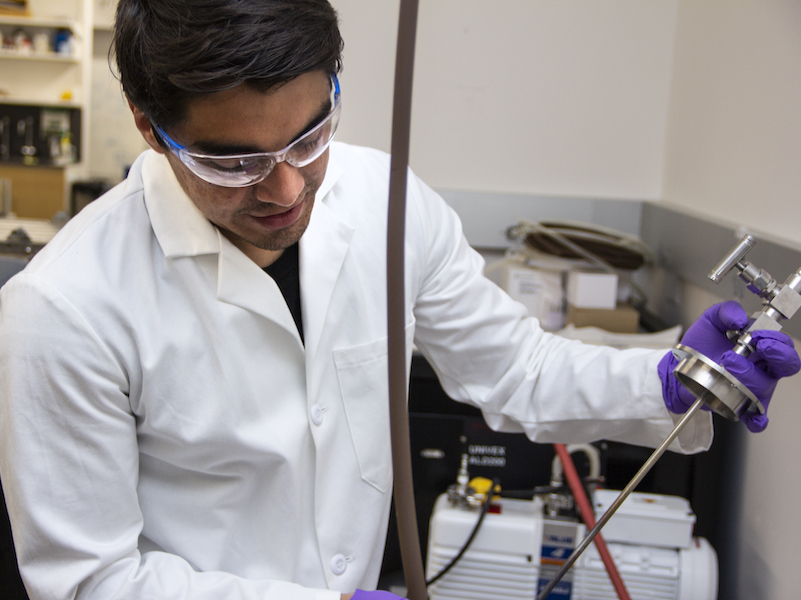
Advanced entry Ph.D.
The advanced entry Ph.D. is for students with an M.S. in an engineering discipline or equivalent field.
Direct Ph.D.
The direct Ph.D. is for students entering the program with a B.S. in an engineering discipline or equivalent field.
For a comprehensive overview of the programs, including degree requirements, please consult the most recent handbook
Ph.D. candidate Remesh Shrestha, co-advised by Professors Sheng Shen and Maarten de Boer, explains his research to create polymer nanowires that have high thermal conductivity:
Other Ph.D. programs and partnerships
Apply here (by these deadlines).
For spring 2023
For fall 2022
The application for fall entry opens in October.
More information
Ph.D. employment stats
Ph.D. enrollment and completion stats [pdf]
It appears you have javascript disabled. Please enable javascript to get the full experience of gustavus.edu
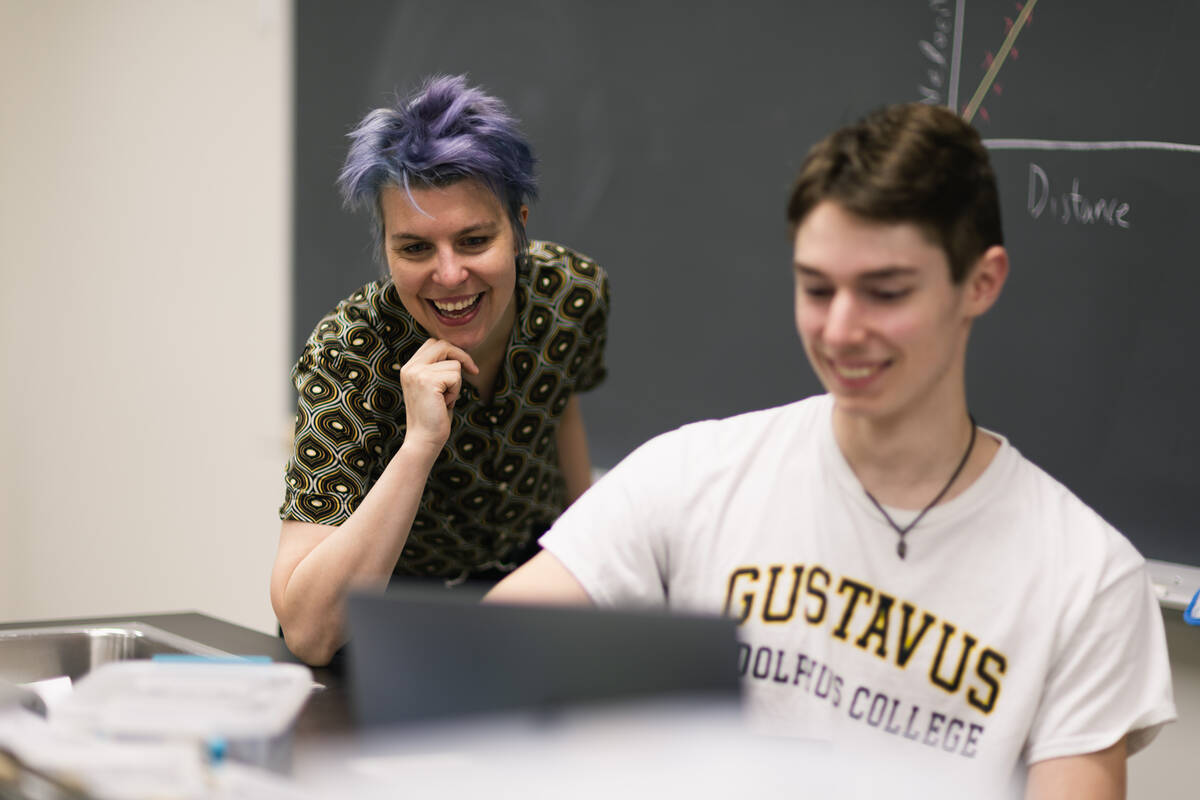
Department of Physics Academics
About the department, empowering scientific minds.
Physics studies the interactions in our universe, which can involve anything from designing buildings, transit, and medical devices to understanding the furthest corners of distant galaxies. The physics department at Gustavus is dedicated to educating future scientists and engineers. Learning physics in a liberal art setting prepares you to be a well-rounded problem-solver, with one-on-one instruction by your faculty members, research experiences, and a vibrant community-oriented learning environment. You'll work in facilities designed to teach and involve undergraduate researchers with top-end equipment, from the observatory on top of Olin Hall to the state-of-the-art acoustics lab.
Throughout your degree program, you'll experience a dynamic, student-centered learning environment. Your award-winning professors are at the top of their fields and engage in active research collaborations with students. With Gustavus physics, you can achieve your full potential in the classroom, lab, and career. If you plan to attend a top-rated graduate program in physics, engineering, or some related field, the Gustavus physics program will prepare you to excel. Whether you want to explore space, create tomorrow's sustainable technology solutions on Earth, or anything in between, Gustavus physics is where it all begins.
Learn More About the Physics Department
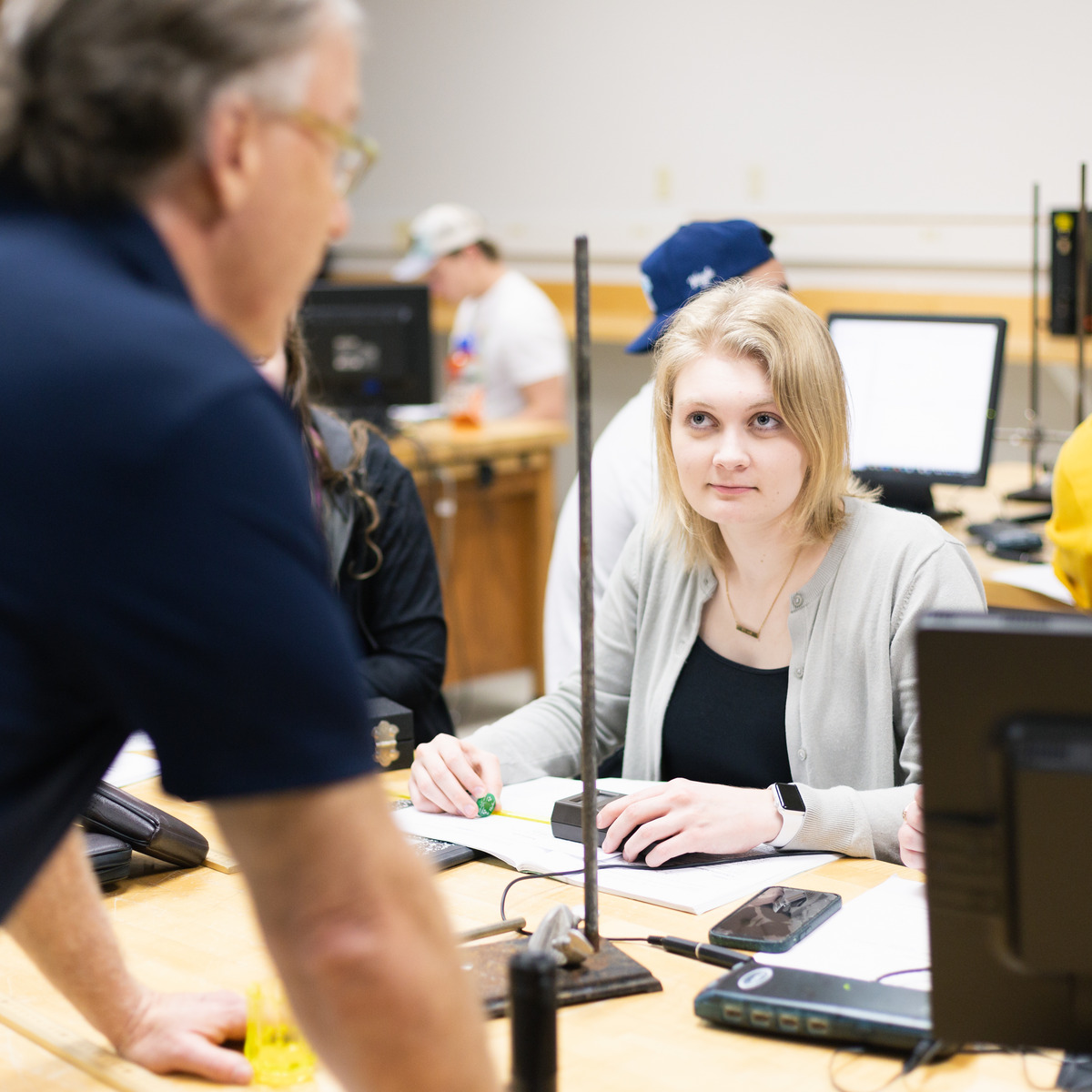
Recognized as One of the Best Physics Programs in the Country
As a physics student at Gustavus Adolphus College, you will be part of a strong and engaged community of scholars in the beautiful State of Minnesota , and a member of an academic program that has been a leading undergraduate source of successful engineers and physicists. Located in St. Peter, MN, the stunning Gustavus Adolphus campus is a perfect place to build close-knit relationships with proximity to big-city opportunities. You're minutes away from the medium-sized city of Mankato and an hour from the dynamic Twin Cities of Minneapolis and St. Paul.
Request More info About Physics
Discover your path: Majors, Minors, and Related Programs
Approximately two-thirds of Gustavus physics graduates attend graduate or professional school in physics, engineering, law, or medicine. The Gustavus physics major is designed to prepare students to be highly skilled and innovative leaders. In your first two years, you'll study the broad foundations of physics, from classical mechanics to quantum theory. Then, you'll expand and deepen your learning to advanced and applied physics, including electronics and instrumentation, experimental physics, and core theory areas like mechanics, electromagnetic theory and quantum mechanics. Gustavus physics students also frequently double major, recently involving music, mathematics, economics, or philosophy.
Majors and Minors
Related programs.
- Computer Science
- Mathematics
- Pre-Engineering
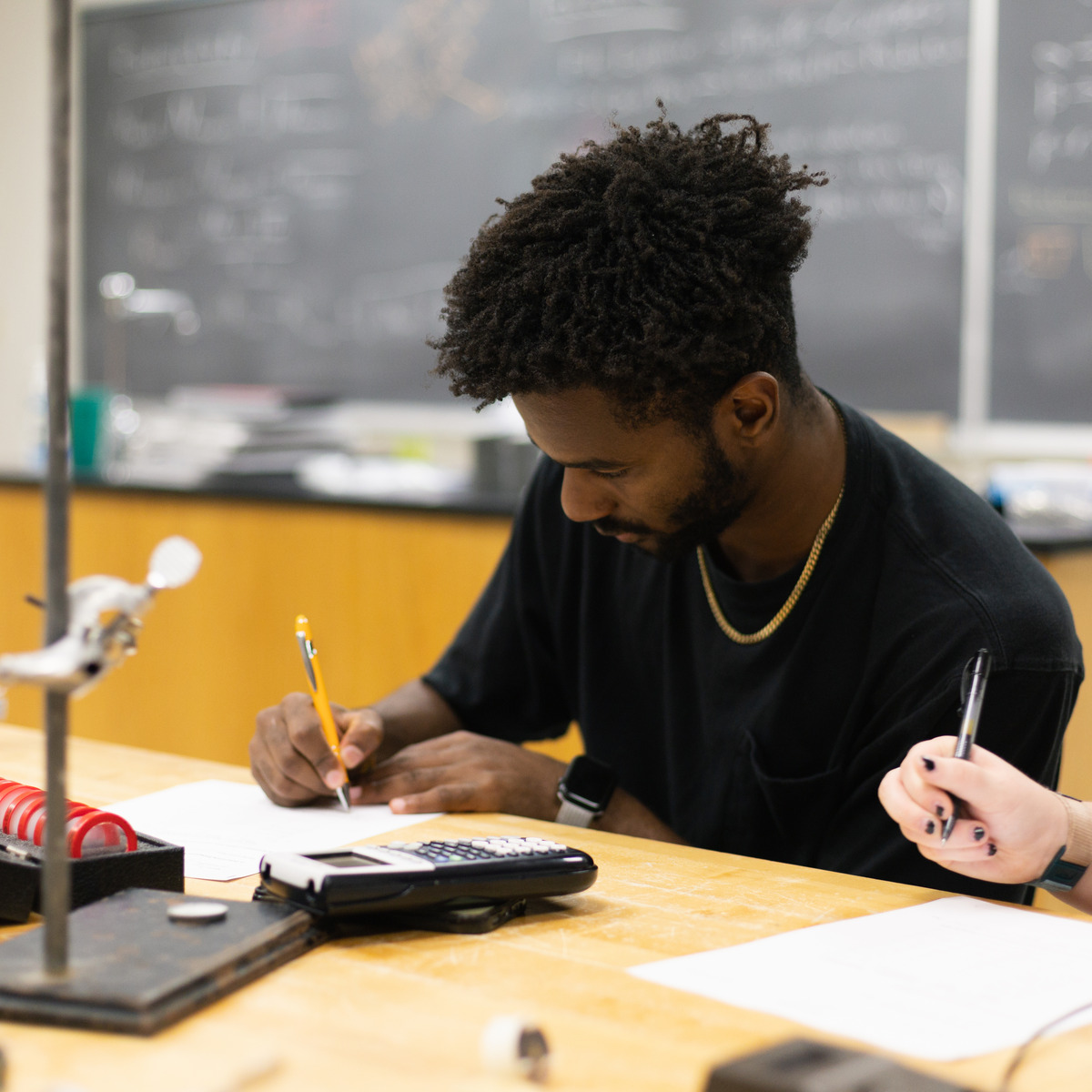
Career Preparation Engineered For Your Success
A common path for physics students is engineering. Our pre-engineering program is embedded in the liberal arts. This means cultivating well-rounded individuals who are technically proficient who possess a broad range of critical thinking and problem-solving skills, plus are also active in other activities on our residential campus. The courses emphasize a strong academic foundation and foster teamwork and effective communication—essential qualities in today's dynamic workplace. Gustavus has a long tradition of preparing students for graduate schools and successful engineering careers.
Opportunities in Physics
Strong academics in a strong community.
The Department of Physics is a close cohort extending their learning beyond the classroom. The department hosts two annual picnics, a competitive ultimate frisbee match, and more. The Society of Physics student chapter also hosts events for the Gustavus and St. Peter community, including Science on Saturdays for elementary kids and highway clean-ups. The physics program prepares you for graduate school and your career through an environment where you can receive a strong academic foundation, receive individual support, and connect with like-minded individuals, all within a vibrant community.
Explore ways to connect with physics
- Research — There are ample opportunities for physics research all four years, allowing you to engage in hands-on scientific exploration and collaborate with faculty mentors. Physics students frequently win state, national, and international awards for their research including securing positions at top research labs and organizations.
- Faculty Advising and Academic Support — The physics department has resources such as tutoring and study groups and faculty who are dedicated to support your success.
- Internships — Many physics students complete a summer internship to gain hands-on experience, explore different career paths within physics, participate in research activities, enhance their resume and professional network.
- Study Away — By planning ahead and working closely with your faculty advisor, you can successfully incorporate studying in another country with your physics major and gain an enriching and transformative learning experience.
- Student Organizations — There are several student organizations and an honor society to help you build strong connections outside of class.
- Student Awards — The Department of Physics has several awards and scholarships to encourage students in their pursuit of physics careers and recognize their achievements.
- Facilities and Equipment for Learning — The department's facilities provide a well-equipped environment for you to study, conduct research, and explore the field of physics. The availability of specialized equipment and dedicated spaces promotes active learning, collaboration, and hands-on experience.
- Alumni Network — The physics department maintains a strong network of alumni who are actively involved in supporting the experiences of current students.
- Career Paths and Graduate School — The versatility of a physics degree allows you to pursue diverse career paths and the physics department offers resources to help guide your decision. The majority of Gustavus physics majors do choose to pursue such a graduate-study option.
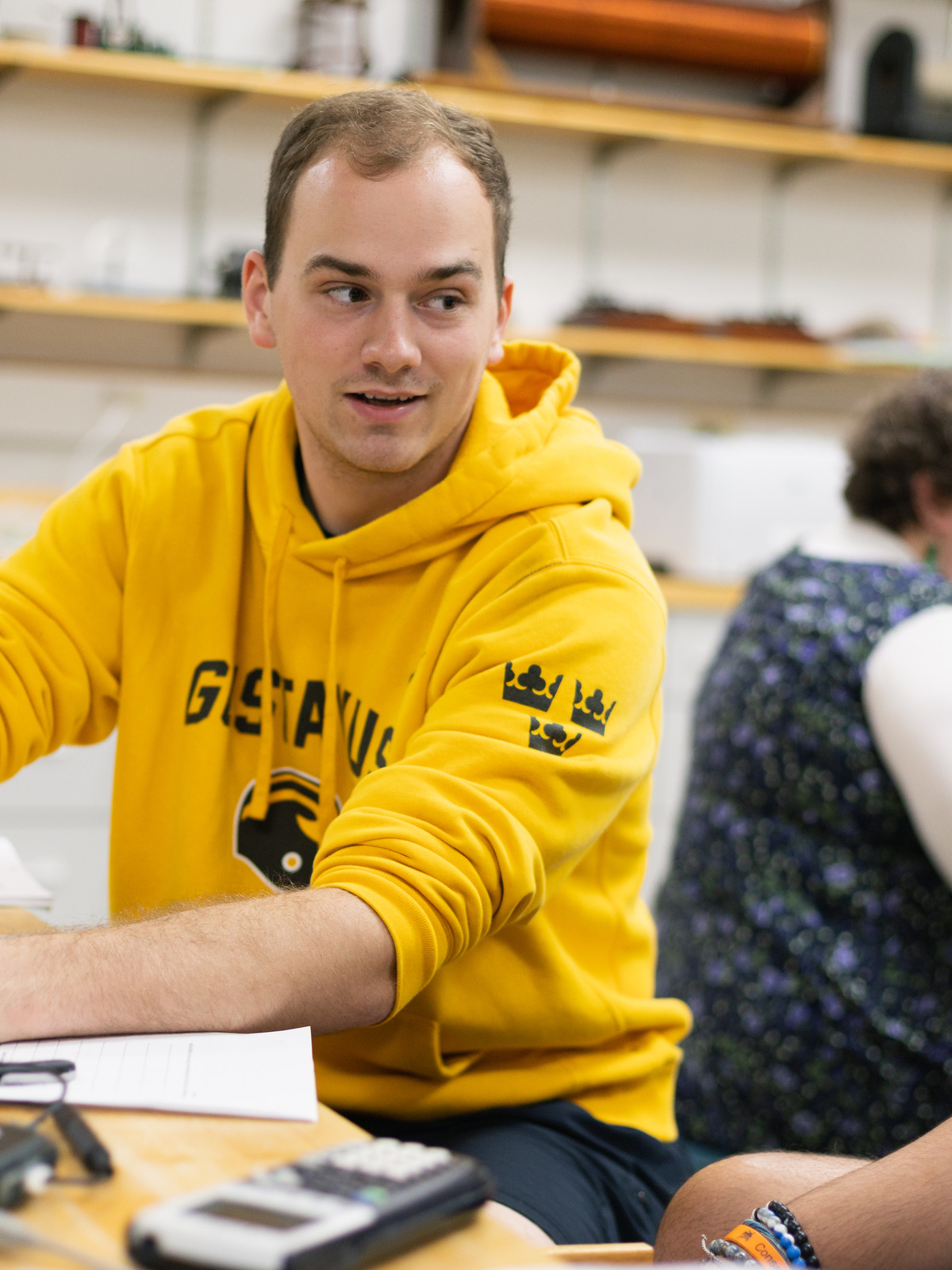
G us ties will Shine
Meet the extraordinary students and faculty in physics. They are pioneering research across disciplines, from sustainable engineering to measuring radio waves on Jupiter.
Meet our Faculty

Joe Weckwerth ’24
Physics and philosophy major.
The Show Continues To Go On For This Multifaceted Ninth-Semester Senior And Human. As a Physics and Philosophy double major, the fundamentals of our human world are always on the forefront for Weckwerth. The two really do work hand-in-hand, he says. Physics asks you to think critically about the physical world. Philosophy asks you to […]
Read more about Joe Weckwerth ’24
Keep in Touch with Physics
The Gustavus physics program prepares you for career success in anything from advanced physics research, to subfields of engineering, medicine, or even law. The supportive community and close relationships with faculty are an ideal environment for you to thrive. Plus, even though the courses can be challenging, physics students do more than study. They are involved in athletics, fine arts, student leadership, community service, and many clubs on campus. This holistic approach to a liberal-arts education will make you well-prepared for your future career.
Contact Physics
- Career Assessment

- Recognized Universities
- Merit Calculators
- Scholarships
- Entry Tests
- Past Papers
BISE Faisalabad Board 10th Result 2024 - FSD Matric Results

Board of Intermediate and Secondary Education BISE Faisalabad will announce the Matric 10th Result 2024 today July 09, 2024 at 10:00 AM. You can also check your results by SMS. To check your result through SMS send your roll number to 800240 to receive your result through SMS. Faisalabad Boards Matric Board examination 2024 were conducted in March this year. BISE Faisalabad board and all other boards of Punjab will announce the result on the same date. Names of the position holders will be announced one day before the official result announcement.
Result CDs will also be available on payment from all BISEs. Punjab Boards Committee of Chairmen finalized the date of announcement of Matric and Inter result 2024. You will be able to check your results through the following means.
The secondary School Certificate (SSC) board examination in Punjab was held in April and now results are ready to be announced. The board will also issue matric results of all educational institutes in Punjab including government high schools and private schools affiliated with Punjab boards. The official gazette also includes institute-wise students' results.
Interestingly most of the students score high marks in class 10 maths, and class 10 biology subjects. Class 10 English is the hardest subject for students, and most of the students score the lowest marks in English subject.
How to check BISE FSD / Faisalabad Board Matric 10th Result 2024
- Faisalabad Board Matric Result 2024 will be announced on July 09, 2024
- The result is available at http://www.bisefsd.edu.pk/
- The second option is to get the results through SMS. You can send your roll number to 800240 to receive your result through SMS
BISE Faisalabad Board Matric 10th Result 2024
The BISE Faisalabad Board 10th result 2024 announcement details are as below.
| Board | (BISE)Board of Intermediate and Secondary Education, Faisalabad |
| Class | 10th |
| Exam Date | March, 2024 |
| Total Students | 120,0000 |
| Result Date | July 09, 2024, at 10:00 AM |
| Result Link |
|
| Official website |
|
Top Inter Colleges in Faisalabad
Here is a list of the Best Inter Colleges in Faisalabad based on their result
- Best Inter Colleges in Faisalabad Large Category
- Top Inter Colleges Medium Category
- Top Inter Colleges in Faisalabad Small Category
What to do After Secondary School Certificate
A detailed article on what should you do after Matric, whether A-level or Fsc is suitable for you or DAE AND diploma courses are a good match for you. Find out here. Students have a number of options after high school board examinations. Most of the students opt for a higher secondary school certificate (HSSC) also known as intermediate. There are various subjects and group options for intermediate including Pre-medical, pre-engineering, ICS, ICOM, general science, and arts groups. Some of the students go for vocational education including certificate and diploma courses after matric. The most common diploma after matric is the Diploma of Associate Engineering (DAE). DAE students can now also pursue higher education options just like Inter students, as DAE is equivalent to FSc.
Intermediate or FA/FSc students have better career options as this path leads to higher education or Bachelor’s degree programs. Having an undergraduate degree not only increases job options but also offers lucrative career options. However, students who are in need of financial help can opt for diploma or certificate courses after matric. This is pertinent to mention here that hundreds of thousands of scholarships are offered to students to pursue higher education. Financial assistance programs by the universities, government, and private NGOs are offered to the students to help them pursue higher education. A monthly stipend is also offered to such students, ranging from PKR: 4,000 to PKR: 40,000/- The scholarship-offering institutions include the Government of Pakistan, HEC indigenous Scholarships, PEEF scholarships, and many other undergraduate degree scholarships. So if you are just considering the option of vocational education because you cannot afford the cost of education, then you must consider going for higher education and explore scholarship options.
Diploma courses after 10th Secondary School Certificate (High School)
- 91 medical Diploma and certificate courses after 10th
- 51 vocational and technical diploma courses after 10th
- 69 Computer & IT Diploma courses after 10th
- 60 Management diploma courses after 10th
How to Check 10th Result 2024 Faisalabad Board
Online by roll number:-.
The most frequent and easiest method for checking the Faisalabad Board result 2024 10th class is by roll number. The option is given on all result pages and is also available on the home page on the result day. On any other day, follow the following steps
- Go to bisefsd.edu.pk official website.
- Select "Results" from the drop-down menu.
- Choose an exam type.
- Enter your Roll Number and click on the submit button
- Your result will be displayed in a new window.
SMS is the quickest way to check the matric results 2024 Faisalabad Board . The majority of students check their results online through the website, which causes server load on the board website and the website does not respond. Students have to wait a long time and try again many times which causes frustration on result day. Bu the easiest method is to check your result through SMS. To check your result through SMS, type your roll number into a text message and send it to the 800291. Follow the following steps
- Please type your roll number in the mobile SMS.
- Send the message to 800291. You will receive an SMS with your result within 1 minute
Explore Other Options
- General News
- School Management
- Job Hunting
- Examinations
Related News


IMAGES
VIDEO
COMMENTS
Santa Barbara, CA. #9 in Physics (tie) Save. 4.5. Graduate schools for physics typically offer a range of specialty programs, from quantum physics to relativity, as well as plentiful research ...
The CU Physics Department offers a doctoral program in Physics which requires the completion of 30 credit hours of graduate-level coursework. Students must maintain (at least) a 3.0 GPA to stay in the program. Students must complete two comprehensive exams and submit and defend a dissertation.
15 Top Schools for a Doctorate in Physics. 1. Stanford University. Stanford, CA. 41 Annual Graduates. Stanford University is a great choice for individuals pursuing a doctor's degree in physics. Located in the suburb of Stanford, Stanford is a private not-for-profit university with a fairly large student population.
Discover which universities around the world are the best for physics & astronomy with the QS World University Rankings by Subject 2024. Massachusetts Institute of Technology (MIT) has been ranked as the best university for studying physics once again this year, ranked ahead of Harvard University which retains second place.
France. Germany. India. Italy. Japan. Netherlands. See the US News rankings for the world's top universities in Physics. Compare the academic programs at the world's best universities.
Graduate Studies. Commencement 2019. The Harvard Department of Physics offers students innovative educational and research opportunities with renowned faculty in state-of-the-art facilities, exploring fundamental problems involving physics at all scales. Our primary areas of experimental and theoretical research are atomic and molecular physics ...
The Physics Ph.D. program provides students with opportunities to perform independent research in some of the most current and dynamic areas of physics. Students develop a solid and broad physics knowledge base in the first year through the core curriculum, departmental colloquia, and training.
Princeton, NJ ·. Graduate School. ·. 3 reviews. Master's Student: The best part of the Princeton University mechanical engineering graduate degree is the excellent faculty that teach the courses. They are incredibly knowledgeable and also very willing to help students in office hours or in sponsorship of projects.
The Physics Department has an outstanding Ph.D. program for students seeking the highest degree available in an academic discipline. This rigorous program requires students to take classes for 3 or 4 semesters, followed by 3 or 4 years of research in a forefront area of physics. During their Ph.D. research, students work closely with a faculty ...
Why Study Physics in United States. Studying Physics in United States is a great choice, as there are 108 universities that offer PhD degrees on our portal. Over 957,000 international students choose United States for their studies, which suggests you'll enjoy a vibrant and culturally diverse learning experience and make friends from all over ...
A Flexible, Interdisciplinary Curriculum. The Ph.D. program in the graduate field of Applied Physics is a research-oriented doctoral program tailored to individual interests. The program combines a core physics curriculum with research and study in one of several areas that deal either with the application of physics to a technical discipline or with the interface between physics and another ...
The Ph.D. is conferred upon candidates who have demonstrated substantial scholarship and the ability to conduct independent research and analysis in applied physics. Through completion of advanced coursework and rigorous skills training, the doctoral program prepares students to make original contributions to the knowledge of applied physics ...
Graduate. Graduate programs in physics and astronomy at Johns Hopkins University are among the top programs in the field. Students engage in original research starting in their first semester and have flexibility in choosing their course of research and designing their path through the program. A wide range of research projects—both ...
A PhD degree in Physics is awarded in recognition of significant and novel research contributions, extending the boundaries of our knowledge of the physical universe. Selected applicants are admitted to the PhD program of the UW Department of Physics, not to a specific research group, and are encouraged to explore research opportunities throughout the Department.
98. University of Alabama at Birmingham. 99. Kansas State University. 100. University of Texas Southwestern Medical Center. The best cities to study Physics in the United States based on the number of universities and their ranks are Cambridge, Berkeley, Stanford, and Ann Arbor.
The Best Colleges for Physics ranking is based on key statistics and student reviews using data from the U.S. Department of Education. The ranking compares the top physics programs in the U.S. This year's rankings have introduced an Economic Mobility Index, which measures the economic status change for low-income students.
Tuition: $55,011 per year. Total Cost: $110,022 *. State: California. Acceptance: 5.19%. The PhD in Biomedical Physics (BMP) program at Stanford University School of Medicine is designed to educate students in research on technology that can be applied to clinical medicine, such as radiation therapy, image-guided therapy, diagnostic ...
Expected Progress of Physics Graduate Student to Ph.D. This document describes the Physics Department's expectations for the progress of a typical graduate student from admission to award of a PhD. Because students enter the program with different training and backgrounds and because thesis research by its very nature is unpredictable, the time-frame for individual students
Doctoral students in Physics may submit an Interdisciplinary PhD in Statistics Form between the end of their second semester and penultimate semester in their Physics program. The application must include an endorsement from the student's advisor, an up-to-date CV, current transcript, and a 1-2 page statement of interest in Statistics and ...
Physics. 161 EUR / year. 3 years. This Physics programme at Politecnico di Torino aims at training PhD candidates contributing to fundamental researches in leading sectors and understanding and promoting those aspects which may improve know-how of high-tech activities. Ph.D. / Full-time / On Campus.
Ranked in 2023, part of Best Science Schools. Discovering, understanding and using materials are central to condensed matter physics, a broad research area for graduate students and working ...
The Medical Physics Graduate Program is an interdisciplinary program sponsored by five departments: radiology, radiation oncology, physics, biomedical engineering, and occupational and environmental safety (health physics). ... The program has available one of the best medical centers in the United States, with outstanding facilities in ...
Ranked in 2023, part of Best Science Schools. Understanding quantum physics is a must for any physicist. With a quantum physics degree, graduates may work in research, engineering and education ...
Harvard University's physics students are welcomed into an environment which is internationally renowned for its faculty, resources, and research initiatives. Commensurate with the academic surroundings are the outstanding cultural and recreational options available in the historic cities of Cambridge and Boston, which have been thriving on the ...
Early in the program, students focus on course-work that enhances their knowledge as they prepare to conduct research. Within one year, students must pass the departmental qualifying exam, an oral exam that tests research skills and knowledge of a core mechanical engineering subject area. Student research forms the core of the Ph.D. program.
Recognized as One of the Best Physics Programs in the Country. As a physics student at Gustavus Adolphus College, you will be part of a strong and engaged community of scholars in the beautiful State of Minnesota, and a member of an academic program that has been a leading undergraduate source of successful engineers and physicists.Located in St. Peter, MN, the stunning Gustavus Adolphus ...
Intermediate or FA/FSc students have better career options as this path leads to higher education or Bachelor's degree programs. Having an undergraduate degree not only increases job options but also offers lucrative career options. However, students who are in need of financial help can opt for diploma or certificate courses after matric.